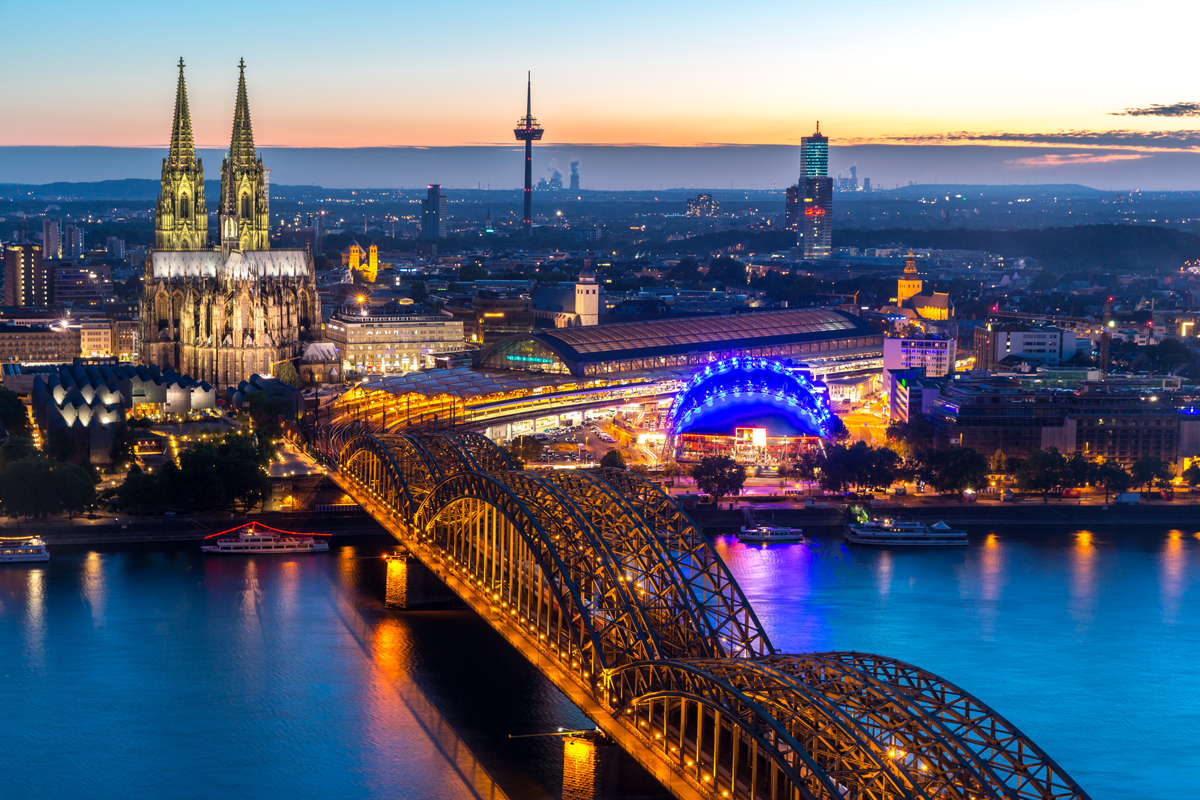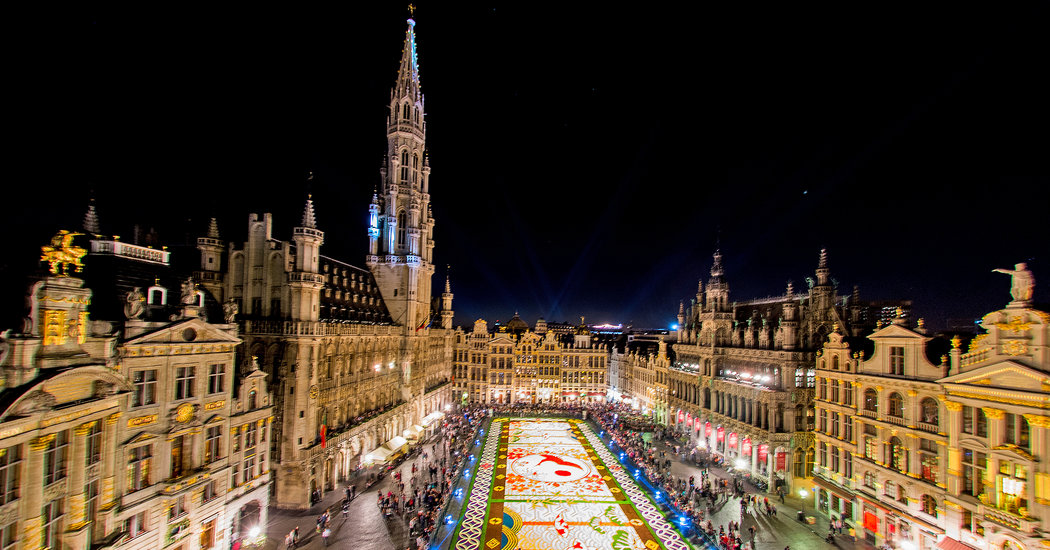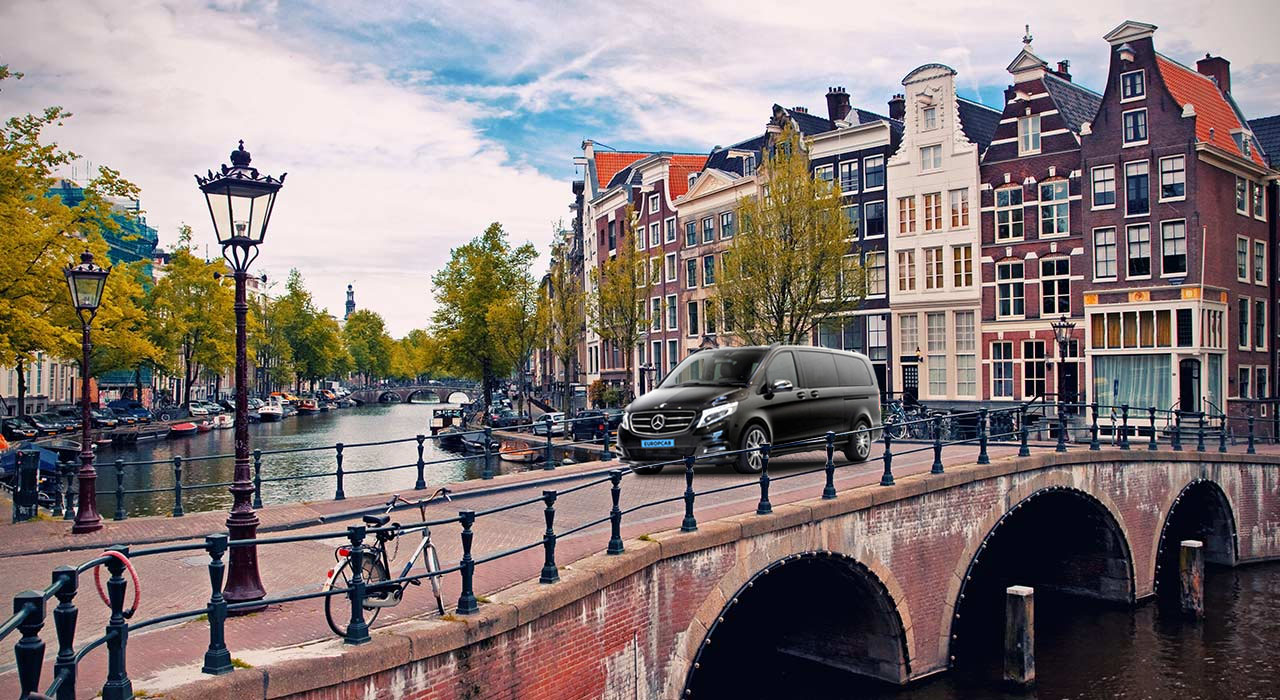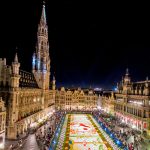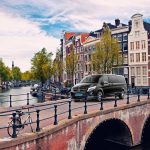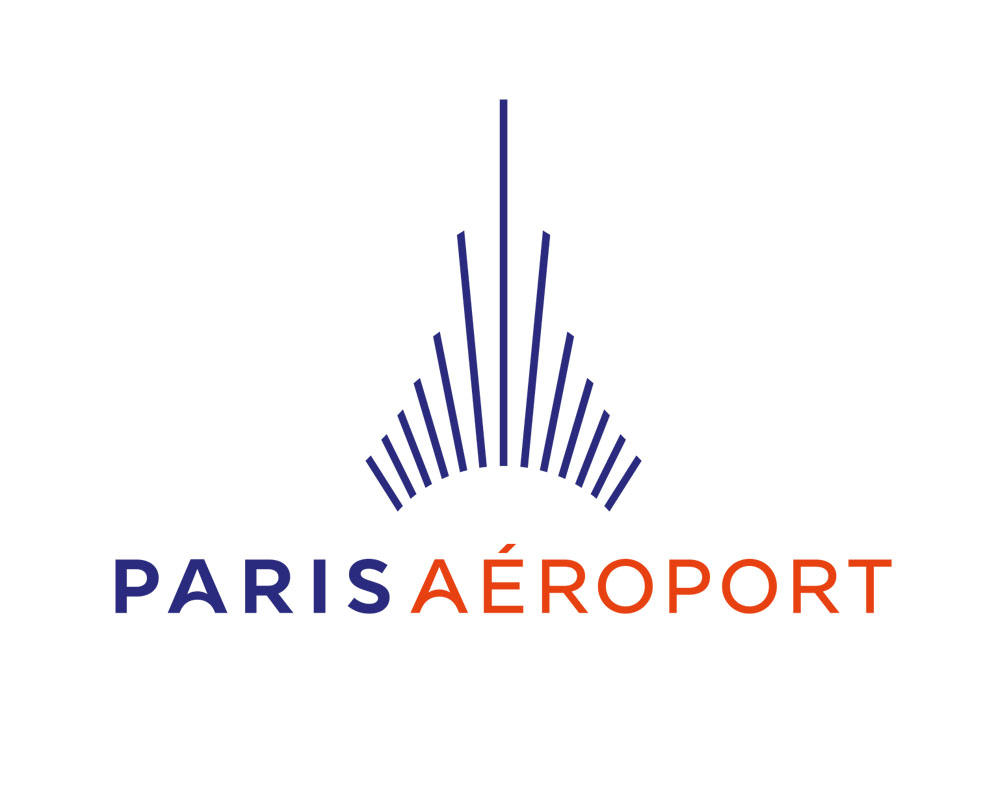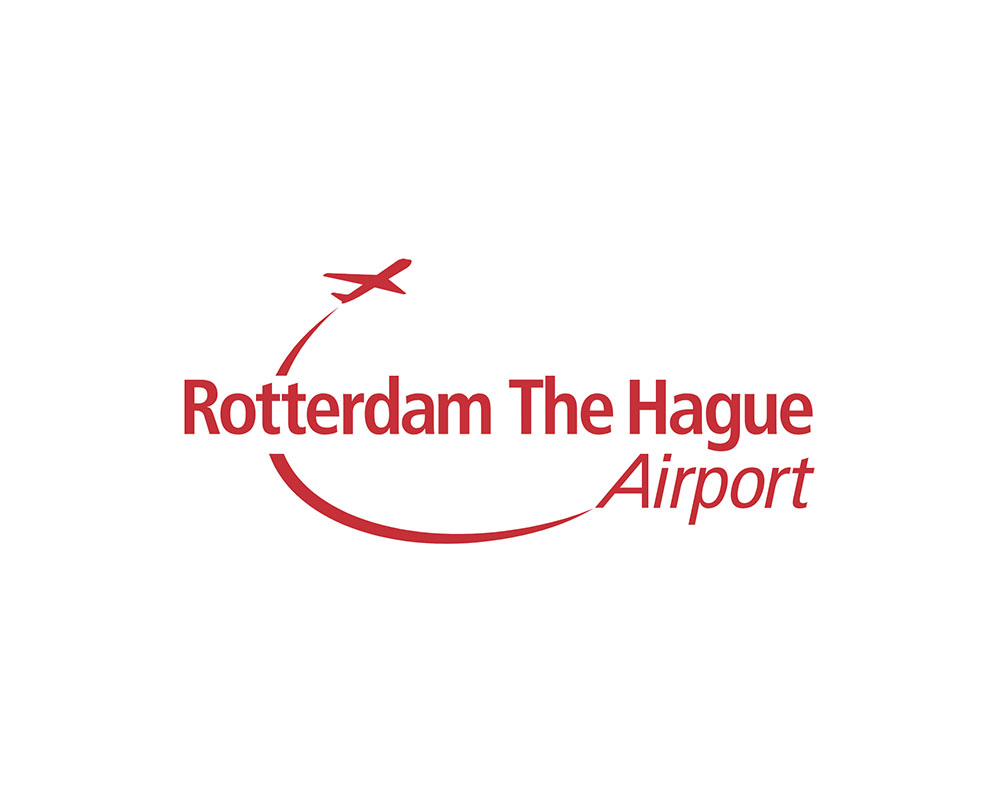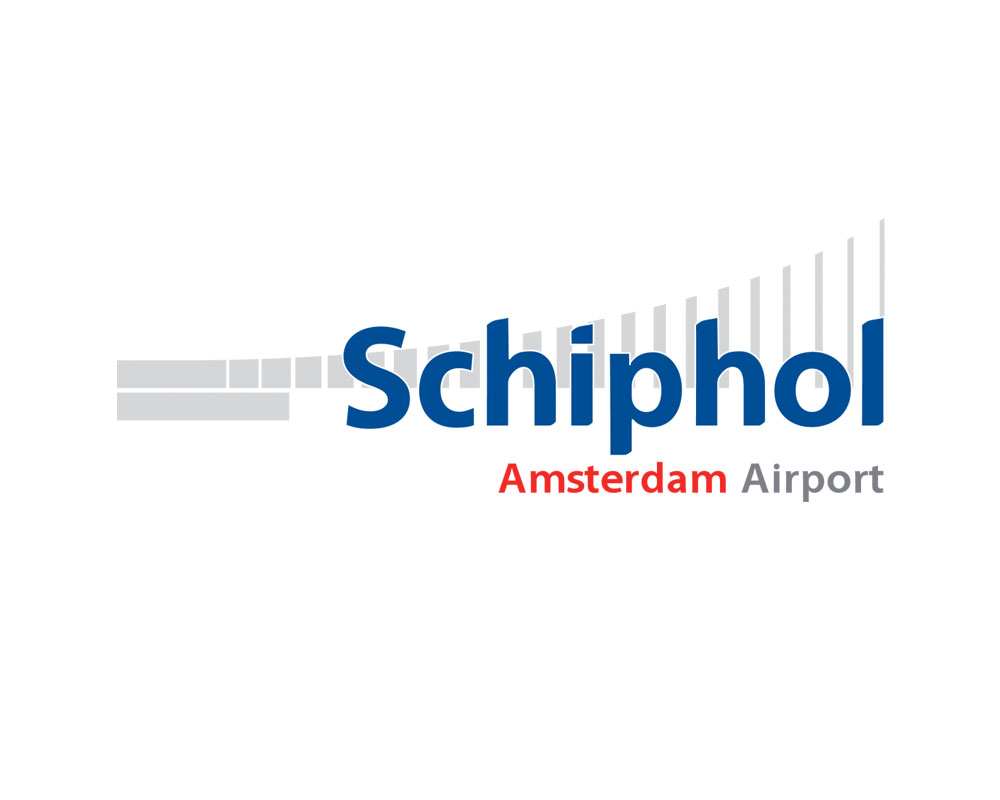Info
Description
Paris is the capital and most populous city of France, with an area of 105 square kilometres (41 square miles) and an official estimated population of 2,140,526 residents as of 1 January 2019. Since the 17th century, Paris has been one of Europe’s major centres of finance, commerce, fashion, science, and the arts. The City of Paris is the centre and seat of government of the Île-de-France, or Paris Region, which has an estimated official 2019 population of 12,213,364, or about 18 percent of the population of France. The larger Paris metropolitan area had a population of 12,532,901 in 2015. The Paris Region had a GDP of €681 billion (US$850 billion) in 2016, accounting for 31 percent of the GDP of France, and was the 5th largest region by GDP in the world. According to the Economist Intelligence Unit Worldwide Cost of Living Survey in 2018, Paris was the second-most expensive city in the world, behind Singapore and ahead of Zurich, Hong Kong, Oslo and Geneva.
The city is a major rail, highway, and air-transport hub served by two international airports: Paris-Charles de Gaulle (the second busiest airport in Europe) and Paris-Orly. Opened in 1900, the city’s subway system, the Paris Métro, serves 5.23 million passengers daily, and is the second busiest metro system in Europe after Moscow Metro. Gare du Nord is the 24th busiest railway station in the world, with 262 million passengers in 2015.
Paris is especially known for its museums and architectural landmarks: the Louvre was the most visited art museum in the world in 2018, with 10.2 million visitors. The Musée d’Orsay and Musée de l’Orangerie are noted for their collections of French Impressionist art, and the Pompidou Centre Musée National d’Art Moderne has the largest collection of modern and contemporary art in Europe. The historical district along the Seine in the city centre is classified as a UNESCO Heritage Site. Popular landmarks in the centre of the city include the Cathedral of Notre Dame de Paris and the Gothic royal chapel of Sainte-Chapelle, both on the Île de la Cité; the Eiffel Tower, constructed for the Paris Universal Exposition of 1889; the Grand Palais and Petit Palais, built for the Paris Universal Exposition of 1900; the Arc de Triomphe on the Champs-Élysées, and the Basilica of Sacré-Coeur on the hill of Montmartre. Paris received 23 million visitors in 2017, measured by hotel stays, with the largest numbers of foreign visitors coming from the United States, the UK, Germany and China. It was ranked as the third most visited travel destination in the world in 2017, after Bangkok and London.
Book Paris Tour
Top-rated Sights & Attractions
Eiffel Tower
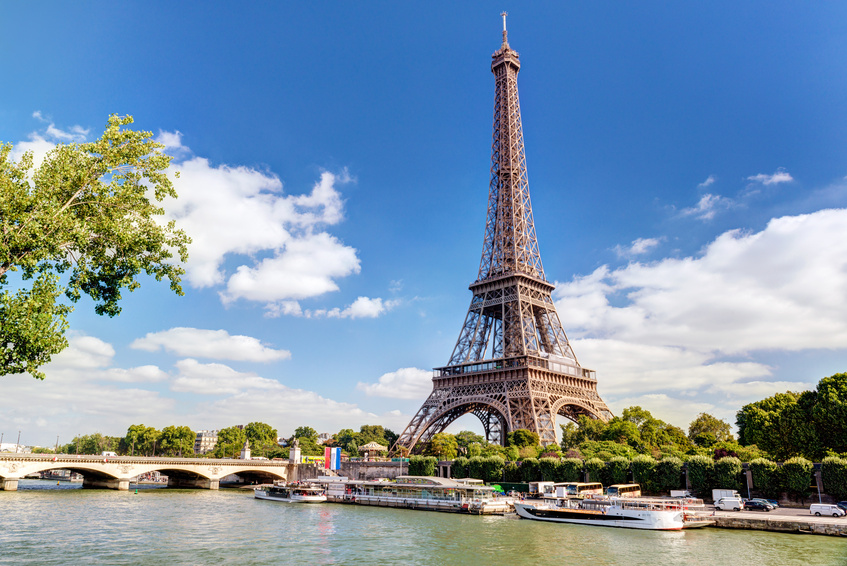 The Eiffel Tower is a wrought-iron lattice tower on the Champ de Mars in Paris, France. It is named after the engineer Gustave Eiffel, whose company designed and built the tower. Constructed from 1887–1889 as the entrance to the 1889 World’s Fair, it was initially criticised by some of France’s leading artists and intellectuals for its design, but it has become a global cultural icon of France and one of the most recognisable structures in the world.[3] The Eiffel Tower is the most-visited paid monument in the world; 6.91 million people ascended it in 2015.The tower is 324 metres (1,063 ft) tall, about the same height as an 81-storey building, and the tallest structure in Paris. Its base is square, measuring 125 metres (410 ft) on each side. During its construction, the Eiffel Tower surpassed the Washington Monument to become the tallest man-made structure in the world, a title it held for 41 years until the Chrysler Building in New York City was finished in 1930. Due to the addition of a broadcasting aerial at the top of the tower in 1957, it is now taller than the Chrysler Building by 5.2 metres (17 ft). Excluding transmitters, the Eiffel Tower is the second tallest free-standing structure in France after the Millau Viaduct.
The Eiffel Tower is a wrought-iron lattice tower on the Champ de Mars in Paris, France. It is named after the engineer Gustave Eiffel, whose company designed and built the tower. Constructed from 1887–1889 as the entrance to the 1889 World’s Fair, it was initially criticised by some of France’s leading artists and intellectuals for its design, but it has become a global cultural icon of France and one of the most recognisable structures in the world.[3] The Eiffel Tower is the most-visited paid monument in the world; 6.91 million people ascended it in 2015.The tower is 324 metres (1,063 ft) tall, about the same height as an 81-storey building, and the tallest structure in Paris. Its base is square, measuring 125 metres (410 ft) on each side. During its construction, the Eiffel Tower surpassed the Washington Monument to become the tallest man-made structure in the world, a title it held for 41 years until the Chrysler Building in New York City was finished in 1930. Due to the addition of a broadcasting aerial at the top of the tower in 1957, it is now taller than the Chrysler Building by 5.2 metres (17 ft). Excluding transmitters, the Eiffel Tower is the second tallest free-standing structure in France after the Millau Viaduct.
The tower has three levels for visitors, with restaurants on the first and second levels. The top level’s upper platform is 276 m (906 ft) above the ground – the highest observation deck accessible to the public in the European Union. Tickets can be purchased to ascend by stairs or lift to the first and second levels. The climb from ground level to the first level is over 300 steps, as is the climb from the first level to the second. Although there is a staircase to the top level, it is usually accessible only by lift.
Musée d’Orsay
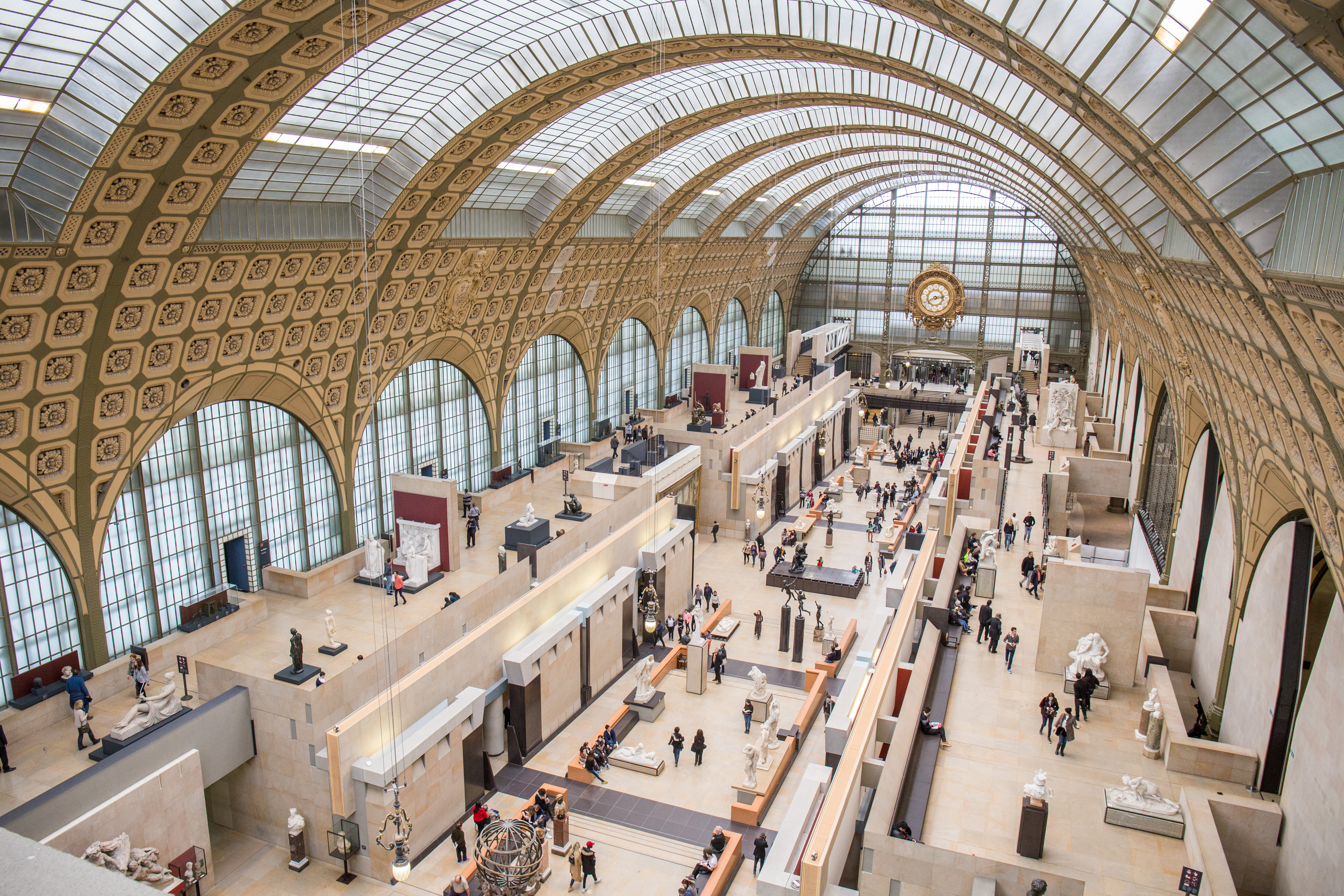 The Musée d’Orsay is a museum in Paris, France, on the Left Bank of the Seine. It is housed in the former Gare d’Orsay, a Beaux-Arts railway station built between 1898 and 1900. The museum holds mainly French art dating from 1848 to 1914, including paintings, sculptures, furniture, and photography. It houses the largest collection of impressionist and post-Impressionist masterpieces in the world, by painters including Monet, Manet, Degas, Renoir, Cézanne, Seurat, Sisley, Gauguin, and Van Gogh. Many of these works were held at the Galerie nationale du Jeu de Paume prior to the museum’s opening in 1986. It is one of the largest art museums in Europe. Musée d’Orsay had 3.177 million visitors in 2017.
The Musée d’Orsay is a museum in Paris, France, on the Left Bank of the Seine. It is housed in the former Gare d’Orsay, a Beaux-Arts railway station built between 1898 and 1900. The museum holds mainly French art dating from 1848 to 1914, including paintings, sculptures, furniture, and photography. It houses the largest collection of impressionist and post-Impressionist masterpieces in the world, by painters including Monet, Manet, Degas, Renoir, Cézanne, Seurat, Sisley, Gauguin, and Van Gogh. Many of these works were held at the Galerie nationale du Jeu de Paume prior to the museum’s opening in 1986. It is one of the largest art museums in Europe. Musée d’Orsay had 3.177 million visitors in 2017.
Avenue des Champs-Élysées
 The Avenue des Champs-Élysées is an avenue in the 8th arrondissement of Paris, France, 1.9 kilometres (1.2 mi) long and 70 metres (230 ft) wide, running between the Place de la Concorde and the Place Charles de Gaulle, where the Arc de Triomphe is located. It is known for its theatres, cafés, and luxury shops, for the annual Bastille Day military parade, and as the finish of the Tour de France cycle race. The name is French for the Elysian Fields, the paradise for dead heroes in Greek mythology. Champs-Élysées is widely regarded to be one of the most recognisable avenues in the world.
The Avenue des Champs-Élysées is an avenue in the 8th arrondissement of Paris, France, 1.9 kilometres (1.2 mi) long and 70 metres (230 ft) wide, running between the Place de la Concorde and the Place Charles de Gaulle, where the Arc de Triomphe is located. It is known for its theatres, cafés, and luxury shops, for the annual Bastille Day military parade, and as the finish of the Tour de France cycle race. The name is French for the Elysian Fields, the paradise for dead heroes in Greek mythology. Champs-Élysées is widely regarded to be one of the most recognisable avenues in the world.
Notre-Dame de Paris
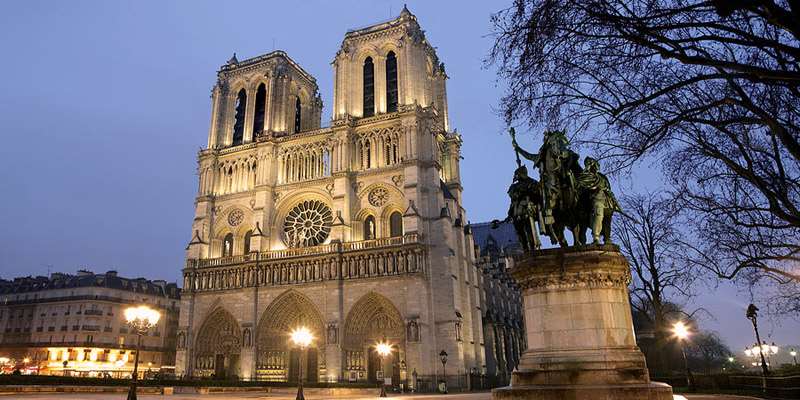 Notre-Dame de Paris (Our Lady of Paris), also known as Notre-Dame Cathedral or simply Notre-Dame, is a medieval Catholic cathedral on the Île de la Cité in the fourth arrondissement of Paris, France. The cathedral is widely considered to be one of the finest examples of French Gothic architecture. The innovative use of the rib vault and flying buttress, the enormous and colorful rose windows, and the naturalism and abundance of its sculptural decoration all set it apart from earlier Romanesque architecture. 12 million people visit Notre-Dame yearly, which makes it the most visited monument in Paris.
Notre-Dame de Paris (Our Lady of Paris), also known as Notre-Dame Cathedral or simply Notre-Dame, is a medieval Catholic cathedral on the Île de la Cité in the fourth arrondissement of Paris, France. The cathedral is widely considered to be one of the finest examples of French Gothic architecture. The innovative use of the rib vault and flying buttress, the enormous and colorful rose windows, and the naturalism and abundance of its sculptural decoration all set it apart from earlier Romanesque architecture. 12 million people visit Notre-Dame yearly, which makes it the most visited monument in Paris.
The cathedral was begun in 1160 and largely completed by 1260, though it was modified regularly in the following centuries. In the 1790s, Notre-Dame suffered desecration during the French Revolution when much of its religious imagery was damaged or destroyed. Soon after the publication of Victor Hugo’s novel The Hunchback of Notre Dame in 1831, popular interest in the building revived. A major restoration project supervised by Eugène Viollet-le-Duc began in 1845 and continued for twenty-five years. Beginning in 1963, the facade of the Cathedral was cleaned of centuries of soot and grime, returning it to its original color. Another campaign of cleaning and restoration was carried out from 1991-2000.
Louvre
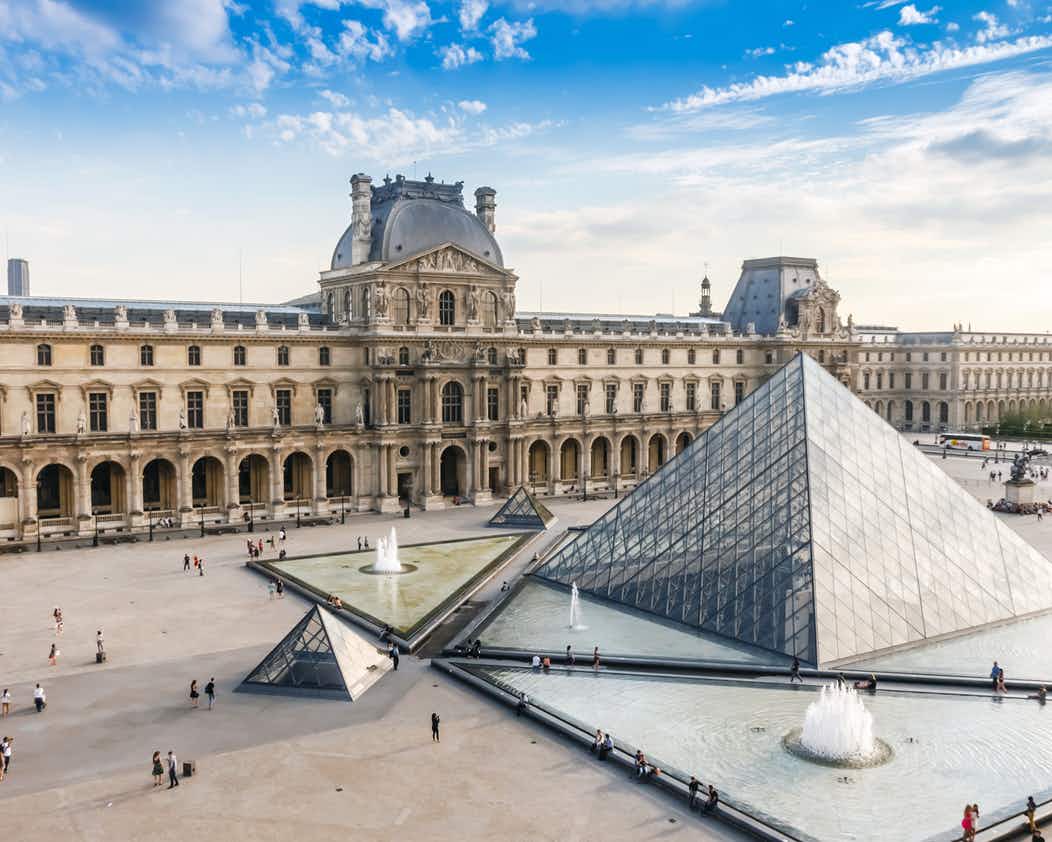 The Louvre or the Louvre Museum (Musée du Louvre), is the world’s largest art museum and a historic monument in Paris, France. A central landmark of the city, it is located on the Right Bank of the Seine in the city’s 1st arrondissement (district or ward). Approximately 38,000 objects from prehistory to the 21st century are exhibited over an area of 72,735 square metres (782,910 square feet). In 2018, the Louvre was the world’s most visited art museum, receiving 10.2 million visitors.
The Louvre or the Louvre Museum (Musée du Louvre), is the world’s largest art museum and a historic monument in Paris, France. A central landmark of the city, it is located on the Right Bank of the Seine in the city’s 1st arrondissement (district or ward). Approximately 38,000 objects from prehistory to the 21st century are exhibited over an area of 72,735 square metres (782,910 square feet). In 2018, the Louvre was the world’s most visited art museum, receiving 10.2 million visitors.
The museum is housed in the Louvre Palace, originally built as the Louvre castle in the late 12th to 13th century under Philip II. Remnants of the fortress are visible in the basement of the museum. Due to the urban expansion of the city, the fortress eventually lost its defensive function and, in 1546, was converted by Francis I into the main residence of the French Kings. The building was extended many times to form the present Louvre Palace. In 1682, Louis XIV chose the Palace of Versailles for his household, leaving the Louvre primarily as a place to display the royal collection, including, from 1692, a collection of ancient Greek and Roman sculpture.[6] In 1692, the building was occupied by the Académie des Inscriptions et Belles-Lettres and the Académie Royale de Peinture et de Sculpture, which in 1699 held the first of a series of salons. The Académie remained at the Louvre for 100 years. During the French Revolution, the National Assembly decreed that the Louvre should be used as a museum to display the nation’s masterpieces.
Palais Garnier
 The Palais Garnier is a 1,979-seat opera house, which was built from 1861 to 1875 for the Paris Opera. It was called the Salle des Capucines, because of its location on the Boulevard des Capucines in the 9th arrondissement of Paris, but soon became known as the Palais Garnier, in recognition of its opulence and its architect, Charles Garnier. The theatre is also often referred to as the Opéra Garnier and historically was known as the Opéra de Paris or simply the Opéra, as it was the primary home of the Paris Opera and its associated Paris Opera Ballet until 1989, when the Opéra Bastille opened at the Place de la Bastille. The Paris Opera now mainly uses the Palais Garnier for ballet.
The Palais Garnier is a 1,979-seat opera house, which was built from 1861 to 1875 for the Paris Opera. It was called the Salle des Capucines, because of its location on the Boulevard des Capucines in the 9th arrondissement of Paris, but soon became known as the Palais Garnier, in recognition of its opulence and its architect, Charles Garnier. The theatre is also often referred to as the Opéra Garnier and historically was known as the Opéra de Paris or simply the Opéra, as it was the primary home of the Paris Opera and its associated Paris Opera Ballet until 1989, when the Opéra Bastille opened at the Place de la Bastille. The Paris Opera now mainly uses the Palais Garnier for ballet.
The Palais Garnier has been called “probably the most famous opera house in the world, a symbol of Paris like Notre Dame Cathedral, the Louvre, or the Sacré Coeur Basilica.” This is at least partly due to its use as the setting for Gaston Leroux’s 1910 novel The Phantom of the Opera and, especially, the novel’s subsequent adaptations in films and the popular 1986 musical. Another contributing factor is that among the buildings constructed in Paris during the Second Empire, besides being the most expensive, it has been described as the only one that is “unquestionably a masterpiece of the first rank.” This opinion is far from unanimous however: the 20th-century French architect Le Corbusier once described it as “a lying art” and contended that the “Garnier movement is a décor of the grave”.
Sainte-Chapelle
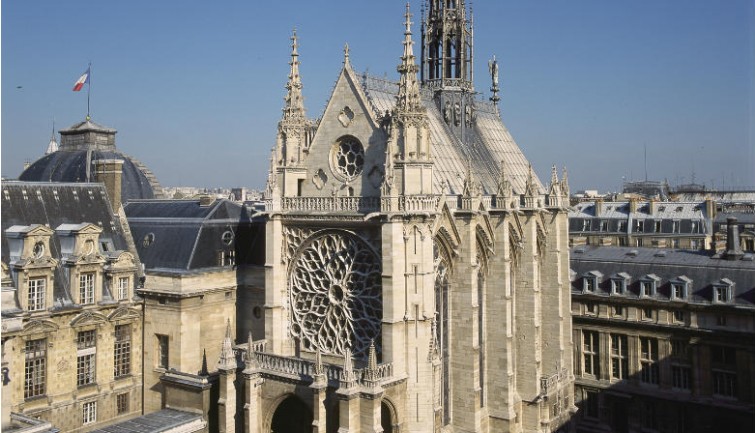 The Sainte-Chapelle (Holy Chapel) is a royal chapel in the Gothic style, within the medieval Palais de la Cité, the residence of the Kings of France until the 14th century, on the Île de la Cité in the River Seine in Paris, France. Construction began some time after 1238 and the chapel was consecrated on 26 April 1248. The Sainte-Chapelle is considered among the highest achievements of the Rayonnant period of Gothic architecture. It was commissioned by King Louis IX of France to house his collection of Passion relics, including Christ’s Crown of Thorns—one of the most important relics in medieval Christendom, now hosted in Notre-Dame Cathedral. Along with the Conciergerie, the Sainte-Chapelle is one of the earliest surviving buildings of the Capetian royal palace on the Île de la Cité. Although damaged during the French Revolution, and restored in the 19th century, it has one of the most extensive 13th-century stained glass collections anywhere in the world.
The Sainte-Chapelle (Holy Chapel) is a royal chapel in the Gothic style, within the medieval Palais de la Cité, the residence of the Kings of France until the 14th century, on the Île de la Cité in the River Seine in Paris, France. Construction began some time after 1238 and the chapel was consecrated on 26 April 1248. The Sainte-Chapelle is considered among the highest achievements of the Rayonnant period of Gothic architecture. It was commissioned by King Louis IX of France to house his collection of Passion relics, including Christ’s Crown of Thorns—one of the most important relics in medieval Christendom, now hosted in Notre-Dame Cathedral. Along with the Conciergerie, the Sainte-Chapelle is one of the earliest surviving buildings of the Capetian royal palace on the Île de la Cité. Although damaged during the French Revolution, and restored in the 19th century, it has one of the most extensive 13th-century stained glass collections anywhere in the world.
Place de la Concorde
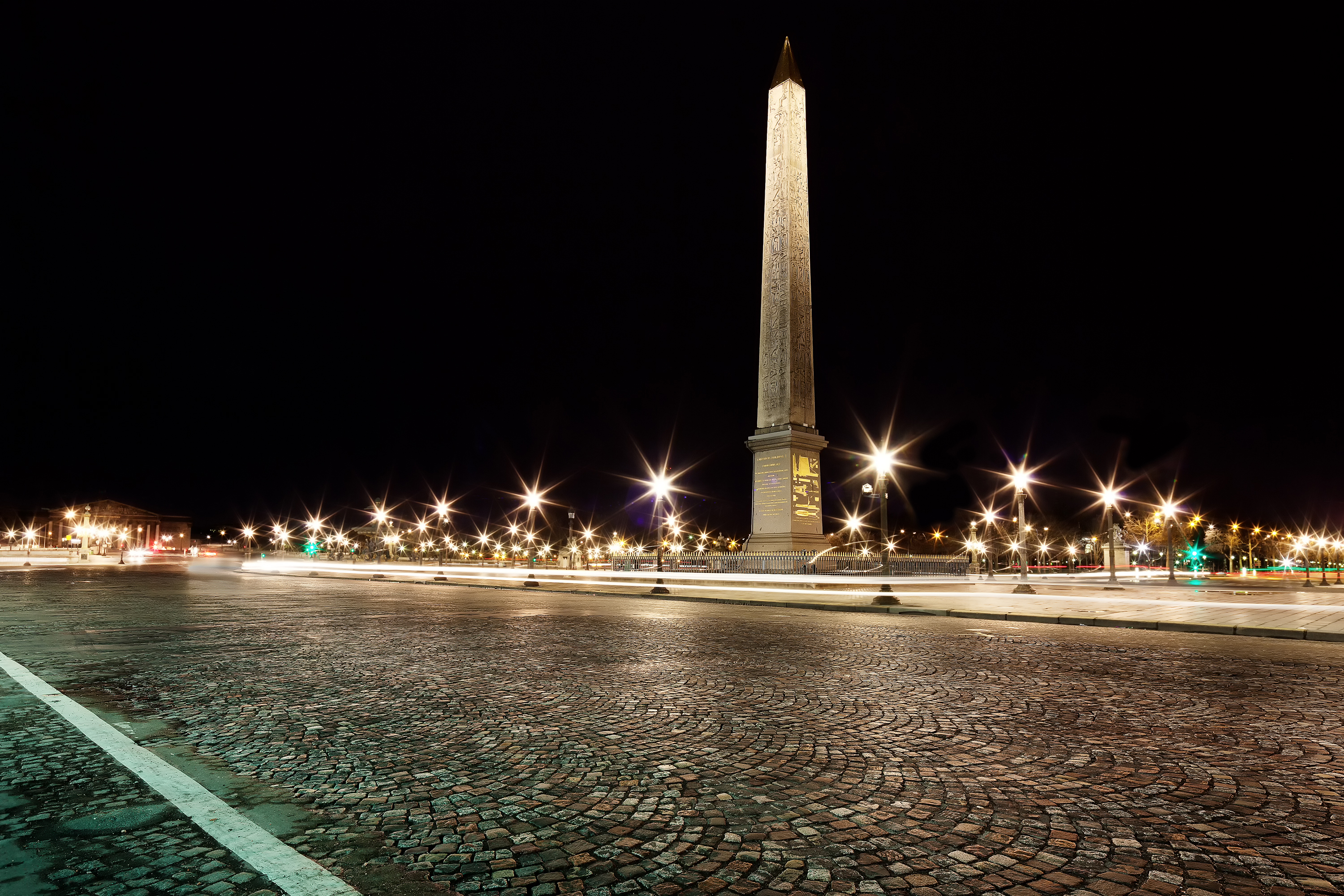 The Place de la Concorde is one of the major public squares in Paris, France. Measuring 7.6 hectares (19 acres) in area, it is the largest square in the French capital. It is located in the city’s eighth arrondissement, at the eastern end of the Champs-Élysées. It was the site of many notable public executions during the French Revolution.
The Place de la Concorde is one of the major public squares in Paris, France. Measuring 7.6 hectares (19 acres) in area, it is the largest square in the French capital. It is located in the city’s eighth arrondissement, at the eastern end of the Champs-Élysées. It was the site of many notable public executions during the French Revolution.
Arc de Triomphe
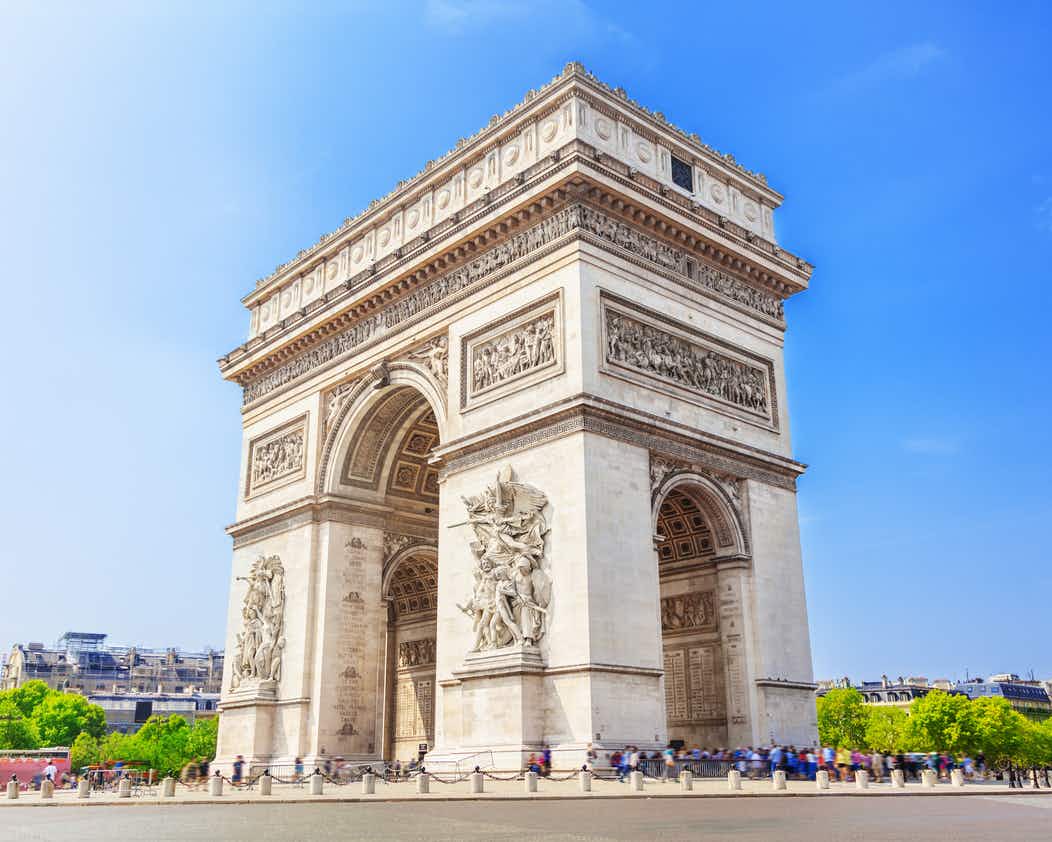 The Arc de Triomphe de l’Étoile (Triumphal Arch of the Star) is one of the most famous monuments in Paris, standing at the western end of the Champs-Élysées at the center of Place Charles de Gaulle, formerly named Place de l’Étoile — the étoile or “star” of the juncture formed by its twelve radiating avenues. The location of the arc and the plaza is shared between three arrondissements, 16th (south and west), 17th (north), and 8th (east).
The Arc de Triomphe de l’Étoile (Triumphal Arch of the Star) is one of the most famous monuments in Paris, standing at the western end of the Champs-Élysées at the center of Place Charles de Gaulle, formerly named Place de l’Étoile — the étoile or “star” of the juncture formed by its twelve radiating avenues. The location of the arc and the plaza is shared between three arrondissements, 16th (south and west), 17th (north), and 8th (east).
As the central cohesive element of the Axe historique (historic axis, a sequence of monuments and grand thoroughfares on a route running from the courtyard of the Louvre to the Grande Arche de la Défense), the Arc de Triomphe was designed by Jean Chalgrin in 1806, and its iconographic program pits heroically nude French youths against bearded Germanic warriors in chain mail. It set the tone for public monuments with triumphant patriotic messages.
Inspired by the Arch of Titus in Rome, Italy, the Arc de Triomphe has an overall height of 50 metres (164 ft), width of 45 m (148 ft), and depth of 22 m (72 ft), while its large vault is 29.19 m (95.8 ft) high and 14.62 m (48.0 ft) wide. The smaller transverse vaults are 18.68 m (61.3 ft) high and 8.44 m (27.7 ft) wide. Three weeks after the Paris victory parade in 1919 (marking the end of hostilities in World War I), Charles Godefroy flew his Nieuport biplane under the arch’s primary vault, with the event captured on newsreel.
Paris’s Arc de Triomphe was the tallest triumphal arch until the completion of the Monumento a la Revolución in Mexico City in 1938, which is 67 metres (220 ft) high. The Arch of Triumph in Pyongyang, completed in 1982, is modelled on the Arc de Triomphe and is slightly taller at 60 m (197 ft). La Grande Arche in La Defense near Paris is 110 metres high. Although it is not named an Arc de Triomphe, it has been designed on the same model and in the perspective of the Arc de Triomphe. It qualifies as the world’s tallest arch.
Bustling Boulevards and Legendary Cafés
 To discover the legendary Paris cafés, the best place to start is the Boulevard Saint-Germain in the 6th arrondissement. This broad tree-lined boulevard is lined with designer fashion boutiques, prestigious cafés, and classic brasseries. The most celebrated cafés are the Café de Flore (172 Boulevard Saint-Germain), which was the meeting place of Jean Paul Sartre and Simone de Beauvoir, and the Café des Deux Magots (6 Place Saint-Germain-des-Prés), the haunt of James Joyce, Picasso, Hemingway, and other creative types. At both cafés, tourists are treated to a classic Parisian café experience, complete with waiters wearing bow ties (although the waiters have a reputation for their brusque service).
To discover the legendary Paris cafés, the best place to start is the Boulevard Saint-Germain in the 6th arrondissement. This broad tree-lined boulevard is lined with designer fashion boutiques, prestigious cafés, and classic brasseries. The most celebrated cafés are the Café de Flore (172 Boulevard Saint-Germain), which was the meeting place of Jean Paul Sartre and Simone de Beauvoir, and the Café des Deux Magots (6 Place Saint-Germain-des-Prés), the haunt of James Joyce, Picasso, Hemingway, and other creative types. At both cafés, tourists are treated to a classic Parisian café experience, complete with waiters wearing bow ties (although the waiters have a reputation for their brusque service).
The brasseries of Boulevard Montparnasse were also frequented by famous artists and writers. Le Dôme in Montparnasse is a Paris institution (108 Boulevard du Montparnasse). In its glittering Art Deco dining room, the restaurant serves gourmet cuisine focused on seafood.
La Coupole (102 Boulevard Montparnasse) is another classic French brasserie with a mythical past; since the 1920s it was visited by famous artists such as André Derain, Fernand Léger, Man Ray, Pablo Picasso, and Marc Chagall. La Coupole also boasts having served Albert Camus and Jean-Paul Sartre. Le Rotonde (105 Boulevard Montparnasse) was a gathering place for painters and Surrealistic artists in the 1920s and still attracts cinematographers and artists today.
Panthéon
 The Panthéon is a building in the Latin Quarter in Paris, France. It was originally built as a church dedicated to St. Genevieve and to house the reliquary châsse containing her relics but, after many changes, now functions as a secular mausoleum containing the remains of distinguished French citizens. It is an early example of neo-classicism, with a façade modelled on the Pantheon in Rome, surmounted by a dome that owes some of its character to Bramante’s Tempietto. Located in the 5th arrondissement on the Montagne Sainte-Geneviève, the Panthéon looks out over all of Paris. Designer Jacques-Germain Soufflot had the intention of combining the lightness and brightness of the Gothic cathedral with classical principles, but its role as a mausoleum required the great Gothic windows to be blocked.
The Panthéon is a building in the Latin Quarter in Paris, France. It was originally built as a church dedicated to St. Genevieve and to house the reliquary châsse containing her relics but, after many changes, now functions as a secular mausoleum containing the remains of distinguished French citizens. It is an early example of neo-classicism, with a façade modelled on the Pantheon in Rome, surmounted by a dome that owes some of its character to Bramante’s Tempietto. Located in the 5th arrondissement on the Montagne Sainte-Geneviève, the Panthéon looks out over all of Paris. Designer Jacques-Germain Soufflot had the intention of combining the lightness and brightness of the Gothic cathedral with classical principles, but its role as a mausoleum required the great Gothic windows to be blocked.
Sacré-Coeur
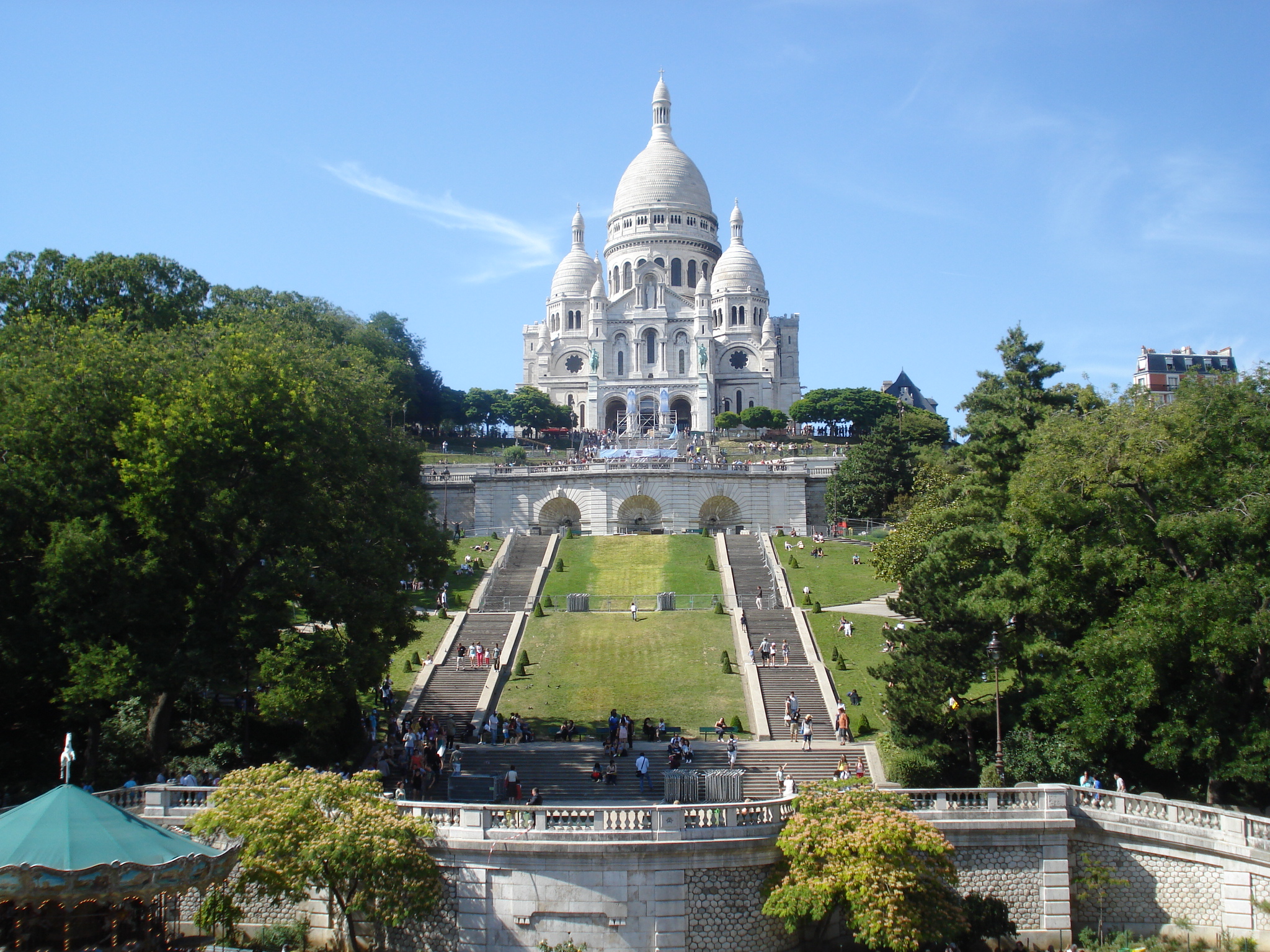
The Basilica of the Sacred Heart of Paris, commonly known as Sacré-Cœur Basilica and often simply Sacré-Cœur , is a Roman Catholic church and minor basilica, dedicated to the Sacred Heart of Jesus, in Paris, France. A popular landmark and the second most visited monument in Paris, the basilica is located at the summit of the butte Montmartre, the highest point in the city. Sacré-Cœur is a double monument, political and cultural, both a national penance for the defeat of France in the 1870 Franco-Prussian War and the socialist Paris Commune of 1871 crowning its most rebellious neighborhood, and an embodiment of conservative moral order, publicly dedicated to the Sacred Heart of Jesus, which was an increasingly popular vision of a loving and sympathetic Christ.The basilica was designed by Paul Abadie. Construction began in 1875 and was completed in 1914. The basilica was consecrated after the end of World War I in 1919.
Jardin du Luxembourg
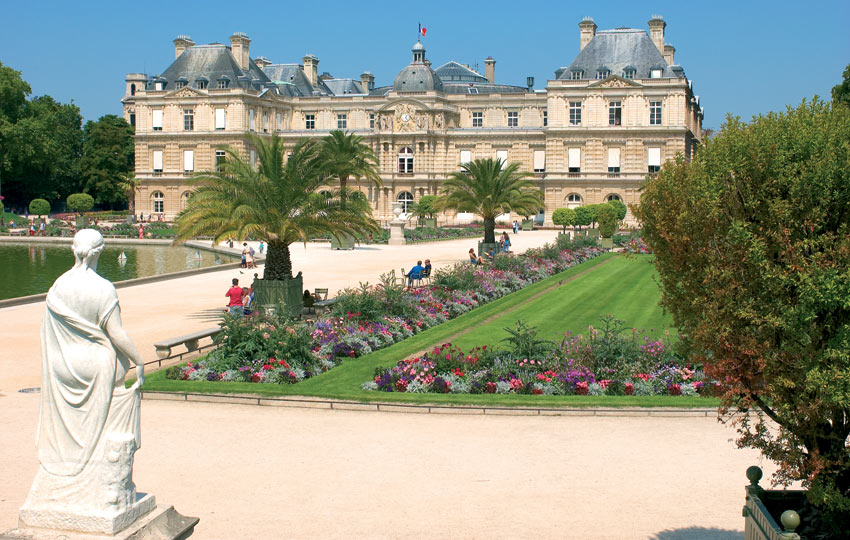 The Jardin du Luxembourg, also known in English as the Luxembourg Gardens, is located in the 6th arrondissement of Paris, France. It was created beginning in 1612 by Marie de’ Medici, the widow of King Henry IV of France, for a new residence she constructed, the Luxembourg Palace. The garden today is owned by the French Senate, which meets in the Palace. It covers 23 hectares and is known for its lawns, tree-lined promenades, flowerbeds, model sailboats on its circular basin, and picturesque Medici Fountain, built in 1620. The name Luxembourg comes from the Latin Mons Lucotitius, the name of the hill where the garden is located.
The Jardin du Luxembourg, also known in English as the Luxembourg Gardens, is located in the 6th arrondissement of Paris, France. It was created beginning in 1612 by Marie de’ Medici, the widow of King Henry IV of France, for a new residence she constructed, the Luxembourg Palace. The garden today is owned by the French Senate, which meets in the Palace. It covers 23 hectares and is known for its lawns, tree-lined promenades, flowerbeds, model sailboats on its circular basin, and picturesque Medici Fountain, built in 1620. The name Luxembourg comes from the Latin Mons Lucotitius, the name of the hill where the garden is located.
Place de Vosges
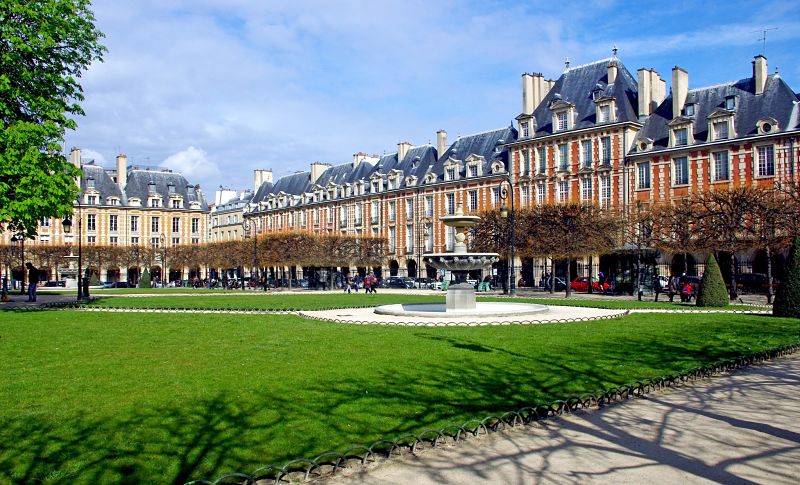 The Place des Vosges, originally Place Royale, is the oldest planned square in Paris, France. It is located in the Marais district, and it straddles the dividing-line between the 3rd and 4th arrondissements of Paris. It was a fashionable and expensive square to live in during the 17th and 18th centuries, and one of the central reasons of the fashionable nature of Le Marais for the Parisian nobility.
The Place des Vosges, originally Place Royale, is the oldest planned square in Paris, France. It is located in the Marais district, and it straddles the dividing-line between the 3rd and 4th arrondissements of Paris. It was a fashionable and expensive square to live in during the 17th and 18th centuries, and one of the central reasons of the fashionable nature of Le Marais for the Parisian nobility.
Centre Pompidou
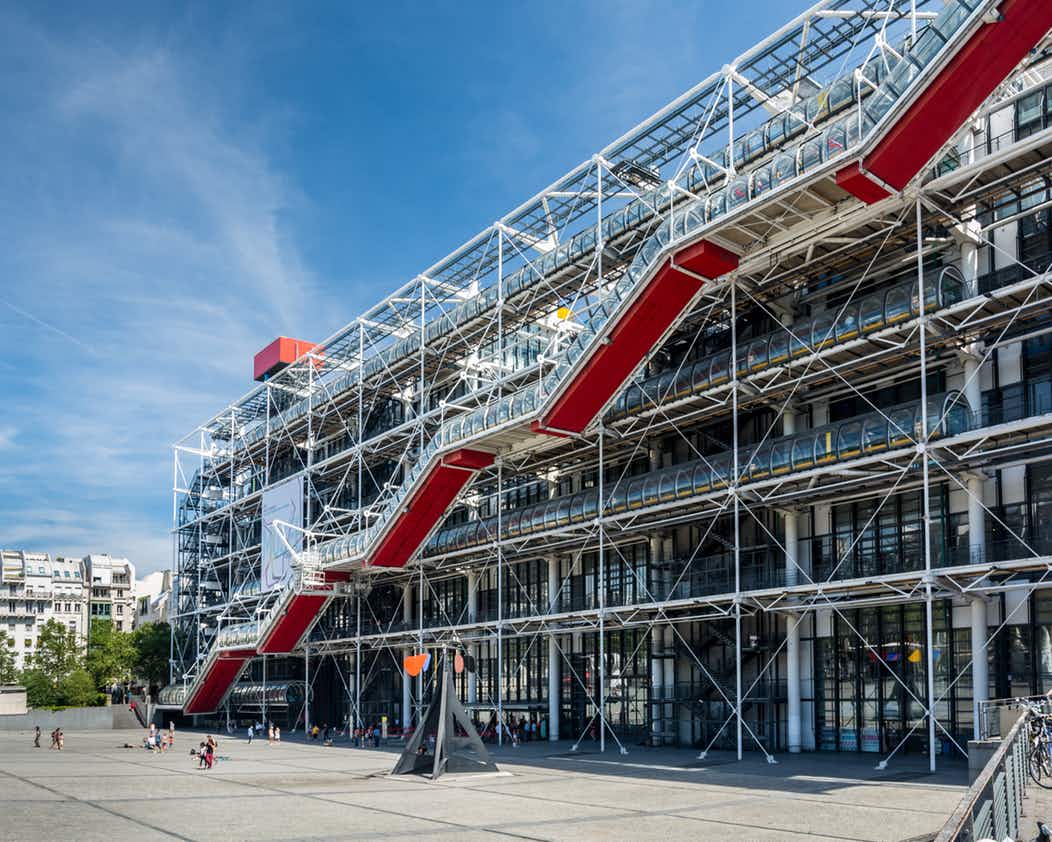 Centre Georges Pompidou, commonly shortened to Centre Pompidou and also known as the Pompidou Centre in English, is a complex building in the Beaubourg area of the 4th arrondissement of Paris, near Les Halles, rue Montorgueil, and the Marais. It was designed in the style of high-tech architecture by the architectural team of Richard Rogers and Renzo Piano, along with Gianfranco Franchini.
Centre Georges Pompidou, commonly shortened to Centre Pompidou and also known as the Pompidou Centre in English, is a complex building in the Beaubourg area of the 4th arrondissement of Paris, near Les Halles, rue Montorgueil, and the Marais. It was designed in the style of high-tech architecture by the architectural team of Richard Rogers and Renzo Piano, along with Gianfranco Franchini.
It houses the Bibliothèque publique d’information (Public Information Library), a vast public library; the Musée National d’Art Moderne, which is the largest museum for modern art in Europe; and IRCAM, a centre for music and acoustic research. Because of its location, the Centre is known locally as Beaubourg (IPA: [bobuʁ]). It is named after Georges Pompidou, the President of France from 1969 to 1974 who commissioned the building, and was officially opened on 31 January 1977 by President Valéry Giscard d’Estaing. As of 2006, the Centre Pompidou has had over 180 million visitors since 1977 and more than 5,209,678 visitors in 2013, including 3,746,899 for the museum.
Palais-Royal
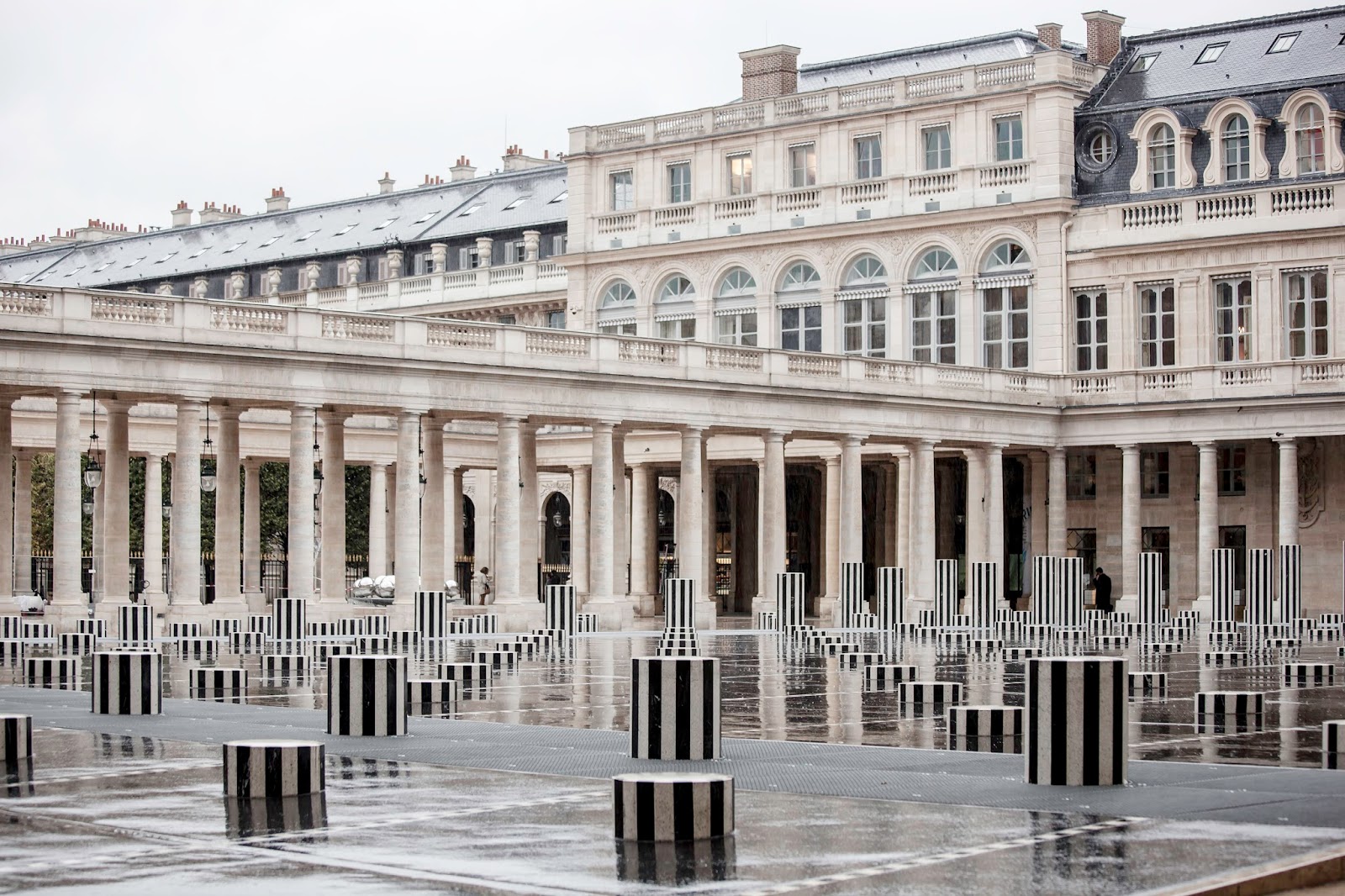 The Palais-Royal, originally called the Palais-Cardinal, is a former royal palace located in the 1st arrondissement of Paris, France. The screened entrance court faces the Place du Palais-Royal, opposite the Louvre. In 1830 the larger inner courtyard of the palace, the Cour d’Honneur, was enclosed to the north by what was probably the most famous of Paris’s covered arcades, the Galerie d’Orléans. Demolished in the 1930s, its flanking rows of columns still stand between the Cour d’Honneur and the popular Palais-Royal Gardens. The Palais-Royal now serves as the seat of the Ministry of Culture and the Constitutional Council.
The Palais-Royal, originally called the Palais-Cardinal, is a former royal palace located in the 1st arrondissement of Paris, France. The screened entrance court faces the Place du Palais-Royal, opposite the Louvre. In 1830 the larger inner courtyard of the palace, the Cour d’Honneur, was enclosed to the north by what was probably the most famous of Paris’s covered arcades, the Galerie d’Orléans. Demolished in the 1930s, its flanking rows of columns still stand between the Cour d’Honneur and the popular Palais-Royal Gardens. The Palais-Royal now serves as the seat of the Ministry of Culture and the Constitutional Council.
Place Vendôme
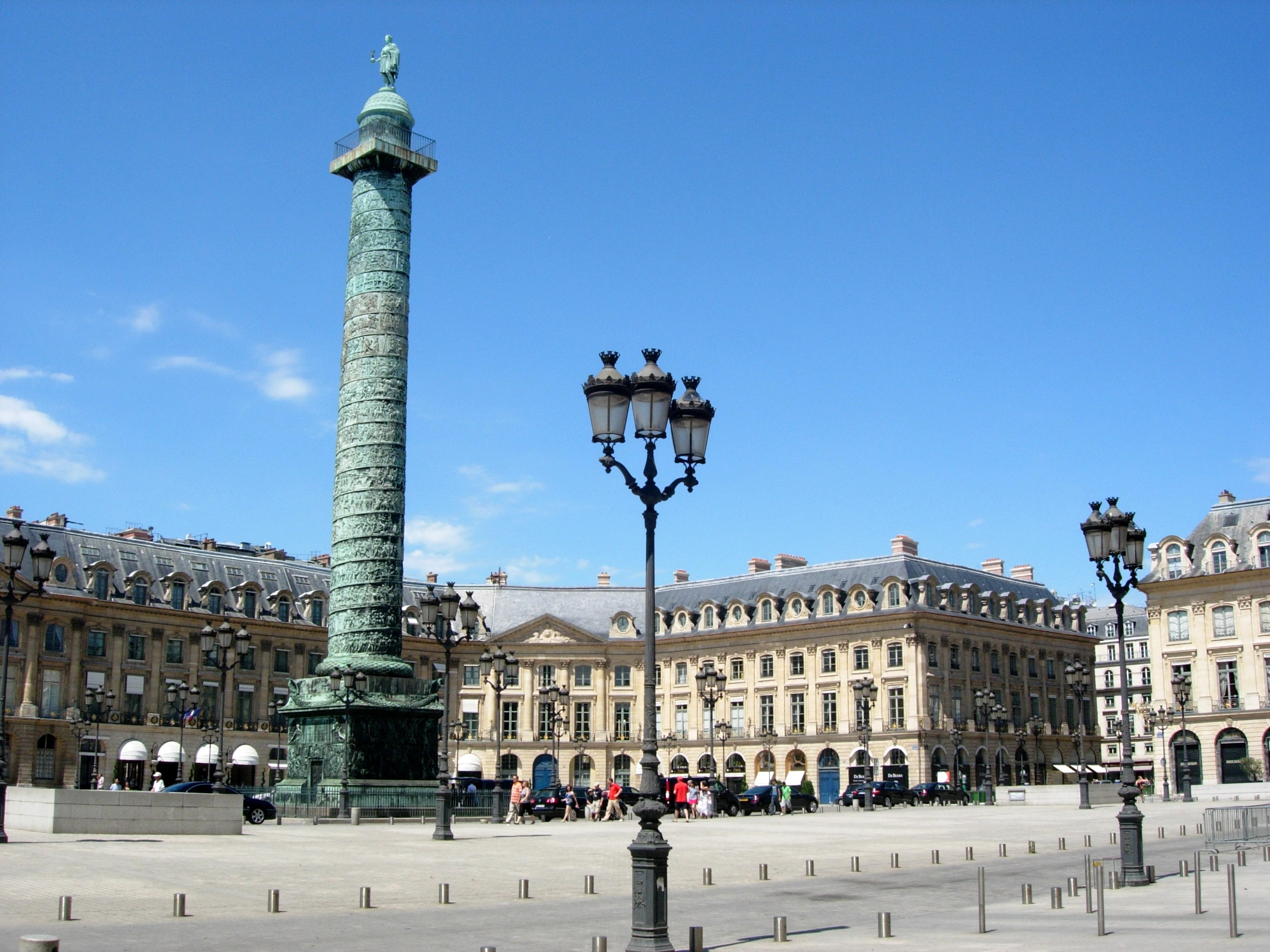 Place Vendôme is a square in the 1st arrondissement of Paris, France, located to the north of the Tuileries Gardens and east of the Église de la Madeleine. It is the starting point of the rue de la Paix. Its regular architecture by Jules Hardouin-Mansart and pedimented screens canted across the corners give the rectangular place Vendôme the aspect of an octagon. The original Vendôme Column at the centre of the square was erected by Napoleon I to commemorate the Battle of Austerlitz; it was torn down on 16 May 1871, by decree of the Paris Commune, but subsequently re-erected and remains a prominent feature on the square today.
Place Vendôme is a square in the 1st arrondissement of Paris, France, located to the north of the Tuileries Gardens and east of the Église de la Madeleine. It is the starting point of the rue de la Paix. Its regular architecture by Jules Hardouin-Mansart and pedimented screens canted across the corners give the rectangular place Vendôme the aspect of an octagon. The original Vendôme Column at the centre of the square was erected by Napoleon I to commemorate the Battle of Austerlitz; it was torn down on 16 May 1871, by decree of the Paris Commune, but subsequently re-erected and remains a prominent feature on the square today.
Les Invalides
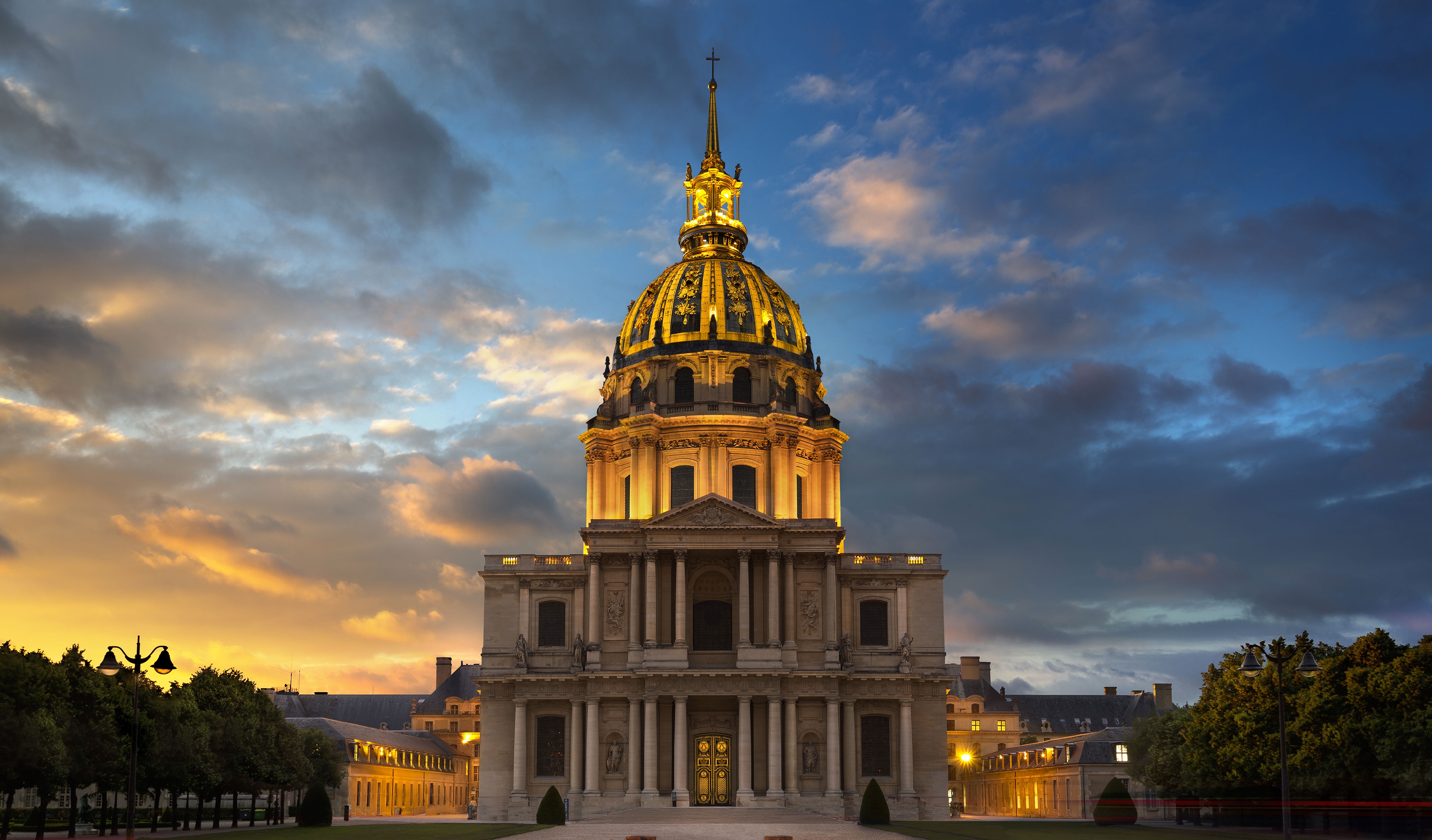 Les Invalides, formally the Hôtel national des Invalides (The National Residence of the Invalids), or also as Hôtel des Invalides, is a complex of buildings in the 7th arrondissement of Paris, France, containing museums and monuments, all relating to the military history of France, as well as a hospital and a retirement home for war veterans, the building’s original purpose. The buildings house the Musée de l’Armée, the military museum of the Army of France, the Musée des Plans-Reliefs, and the Musée d’Histoire Contemporaine, as well as the Dôme des Invalides, a large church, the tallest in Paris at a height of 107 meters, with the tombs of some of France’s war heroes, most notably Napoleon.
Les Invalides, formally the Hôtel national des Invalides (The National Residence of the Invalids), or also as Hôtel des Invalides, is a complex of buildings in the 7th arrondissement of Paris, France, containing museums and monuments, all relating to the military history of France, as well as a hospital and a retirement home for war veterans, the building’s original purpose. The buildings house the Musée de l’Armée, the military museum of the Army of France, the Musée des Plans-Reliefs, and the Musée d’Histoire Contemporaine, as well as the Dôme des Invalides, a large church, the tallest in Paris at a height of 107 meters, with the tombs of some of France’s war heroes, most notably Napoleon.
Place de Bastille
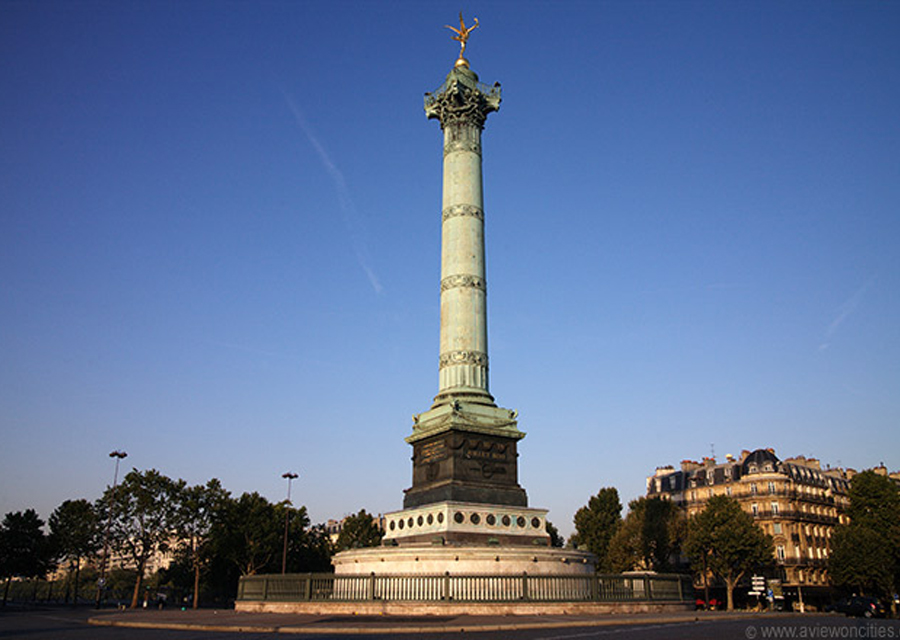
The Place de la Bastille is a square in Paris where the Bastille prison stood until the storming of the Bastille and its subsequent physical destruction between 14 July 1789 and 14 July 1790 during the French Revolution. No vestige of the prison remains. The square straddles 3 arrondissements of Paris, namely the 4th, 11th and 12th. The square and its surrounding areas are normally called simply Bastille. The square is home to concerts and similar events. The north-eastern area of Bastille is busy at night with its many cafés, bars, night clubs, and concert halls. As a consequence of its historical significance, the square is often the site or point of departure of political demonstrations, including the massive anti-CPE demonstration of 28 March 2006.
Fondation Louis Vuitton
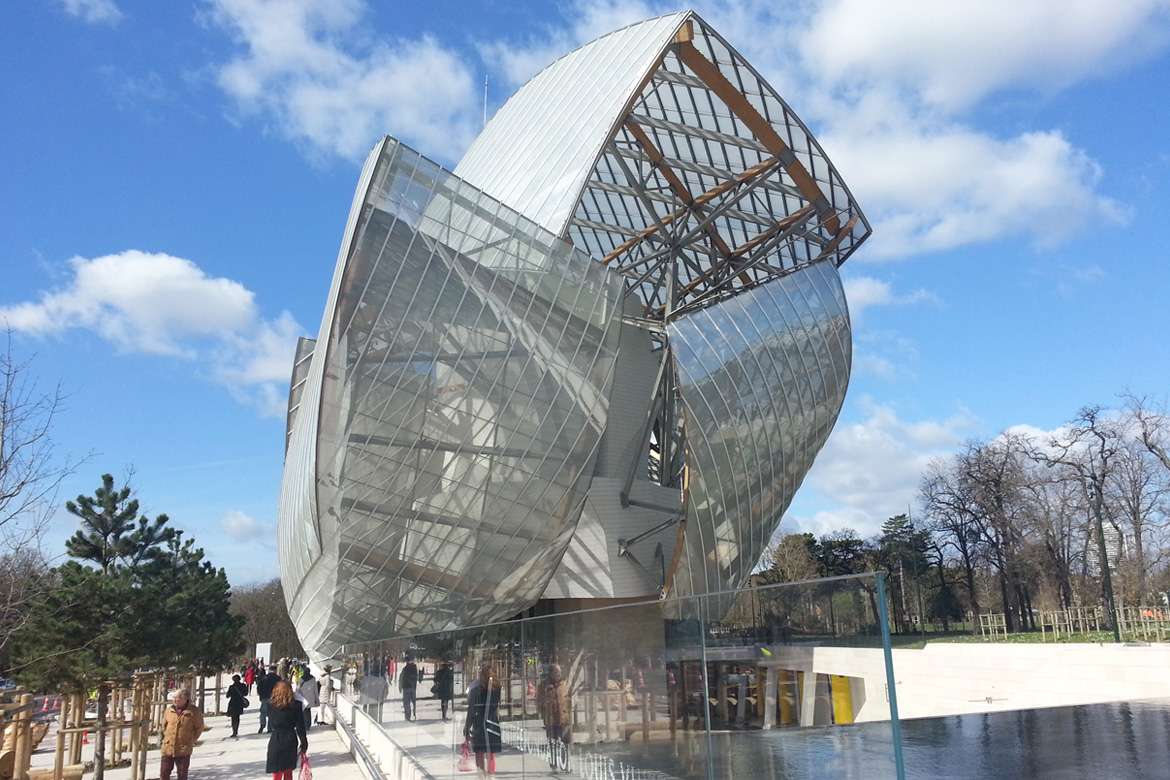 The building of the Louis Vuitton Foundation, started in 2006, is an art museum and cultural center sponsored by the group LVMH and its subsidiaries. It is run as a legally separate, nonprofit entity as part of LVMH’s promotion of art and culture. The art museum opened in October 2014. The building was designed by the architect Frank Gehry, and is adjacent to the Jardin d’Acclimatation in the Bois de Boulogne of the 16th arrondissement of Paris. More than 1 400,000 people visited the Louis Vuitton Foundation in 2017.
The building of the Louis Vuitton Foundation, started in 2006, is an art museum and cultural center sponsored by the group LVMH and its subsidiaries. It is run as a legally separate, nonprofit entity as part of LVMH’s promotion of art and culture. The art museum opened in October 2014. The building was designed by the architect Frank Gehry, and is adjacent to the Jardin d’Acclimatation in the Bois de Boulogne of the 16th arrondissement of Paris. More than 1 400,000 people visited the Louis Vuitton Foundation in 2017.
The actual cost of the museum, initially projected to be €100 million, was revealed in 2017 to have been nearly eight times that sum. A November 2018 report of the French Court of Audit indicated that from 2007 to 2014, the construction of the building constituted the main activity of the Foundation. Earlier that month, FRICC, a French anti-corruption group, filed a complaint in court in Paris accusing the Louis Vuitton Foundation of committing fraud and tax evasion in the construction of its museum. It claims that the nonprofit branch of the LVMH conglomerate was able to deduct about 60% of the cost of the museum from its taxes, and request tax refunds on some other costs. In all, FRICC claims that LVMH and the Louis Vuitton Foundation received nearly €603 million from the government toward the nearly €790 million construction costs of the museum.
Paris Plages
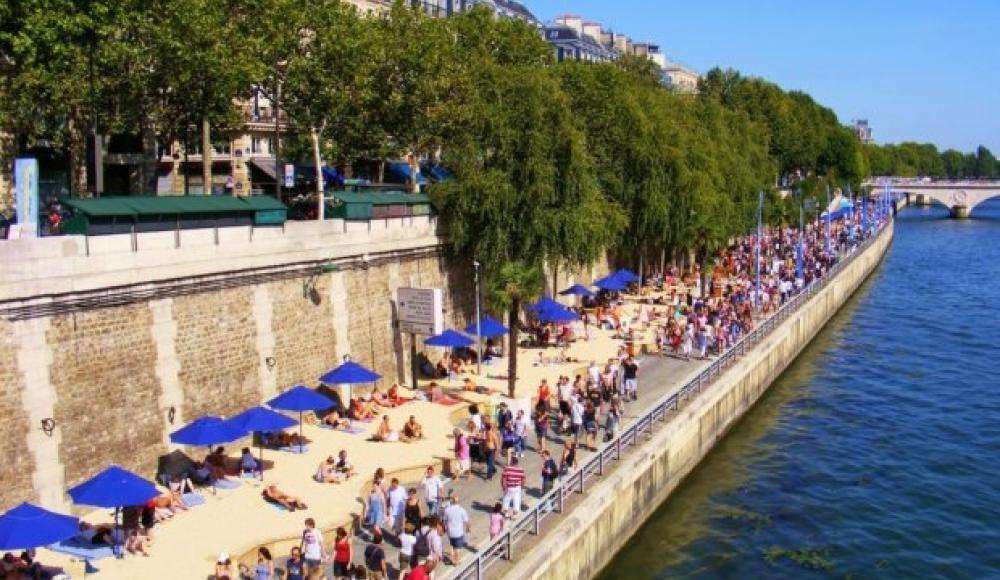 Paris-Plages is a plan run by the office of the mayor of Paris that creates temporary artificial beaches each summer along the river Seine in the centre of Paris, and, since 2007, along the Bassin de la Villette in the northeast of Paris. Every July and August, roadways on the banks of the Seine are closed off and host various activities, including sandy beaches and palm trees.
Paris-Plages is a plan run by the office of the mayor of Paris that creates temporary artificial beaches each summer along the river Seine in the centre of Paris, and, since 2007, along the Bassin de la Villette in the northeast of Paris. Every July and August, roadways on the banks of the Seine are closed off and host various activities, including sandy beaches and palm trees.
Saint-Jacques Tower
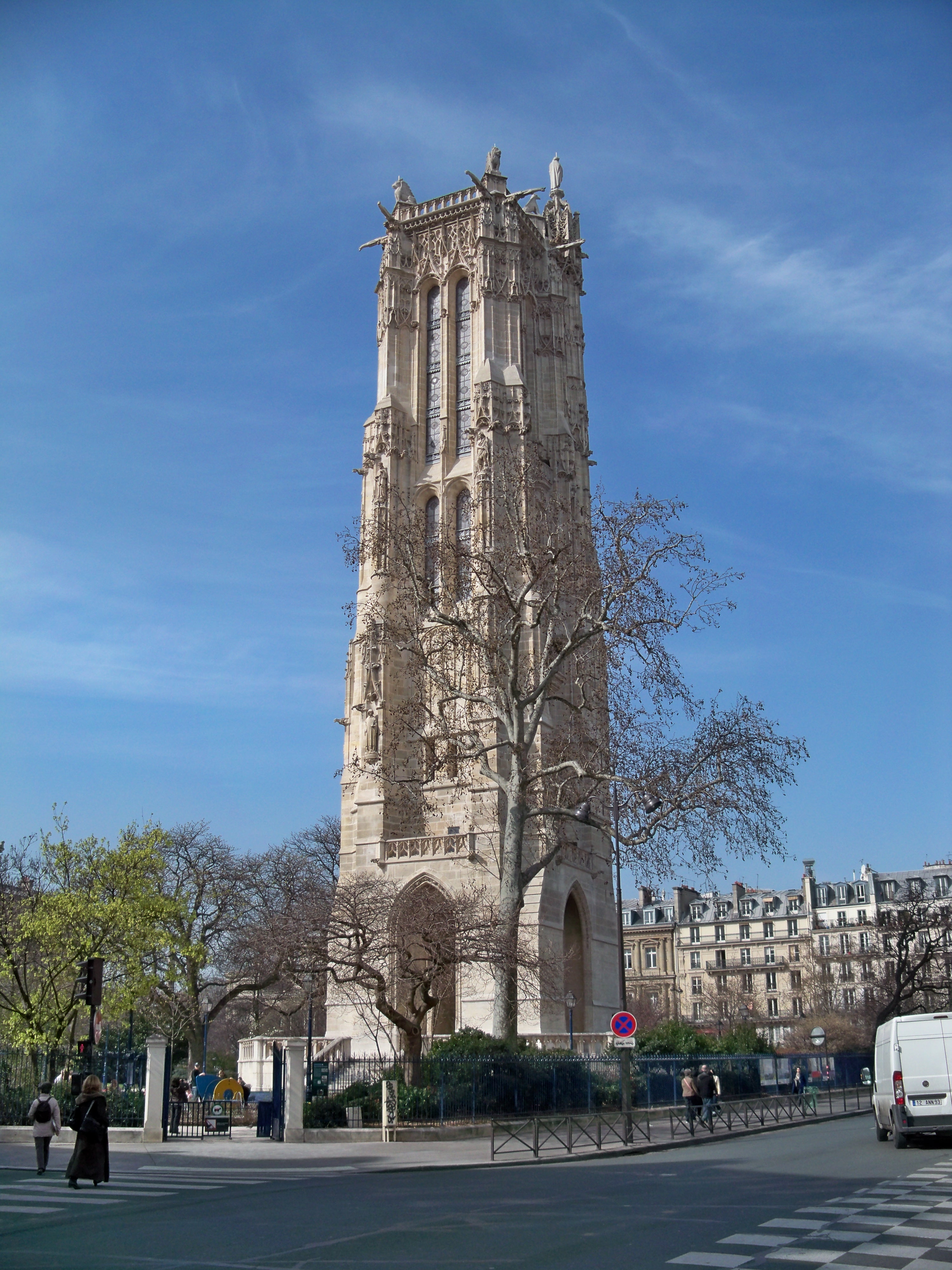 Saint-Jacques Tower (Tour Saint-Jacques) is a monument located in the 4th arrondissement of Paris, France, on Rue de Rivoli at Rue Nicolas Flamel. This 52-metre (171 ft) Flamboyant Gothic tower is all that remains of the former 16th-century Church of Saint-Jacques-de-la-Boucherie (“Saint James of the butchers”), which was demolished in 1797, during the French Revolution, leaving only the tower. What remains of the destroyed church of St. Jacques La Boucherie is now considered a national historic landmark.
Saint-Jacques Tower (Tour Saint-Jacques) is a monument located in the 4th arrondissement of Paris, France, on Rue de Rivoli at Rue Nicolas Flamel. This 52-metre (171 ft) Flamboyant Gothic tower is all that remains of the former 16th-century Church of Saint-Jacques-de-la-Boucherie (“Saint James of the butchers”), which was demolished in 1797, during the French Revolution, leaving only the tower. What remains of the destroyed church of St. Jacques La Boucherie is now considered a national historic landmark.
Place du Châtelet
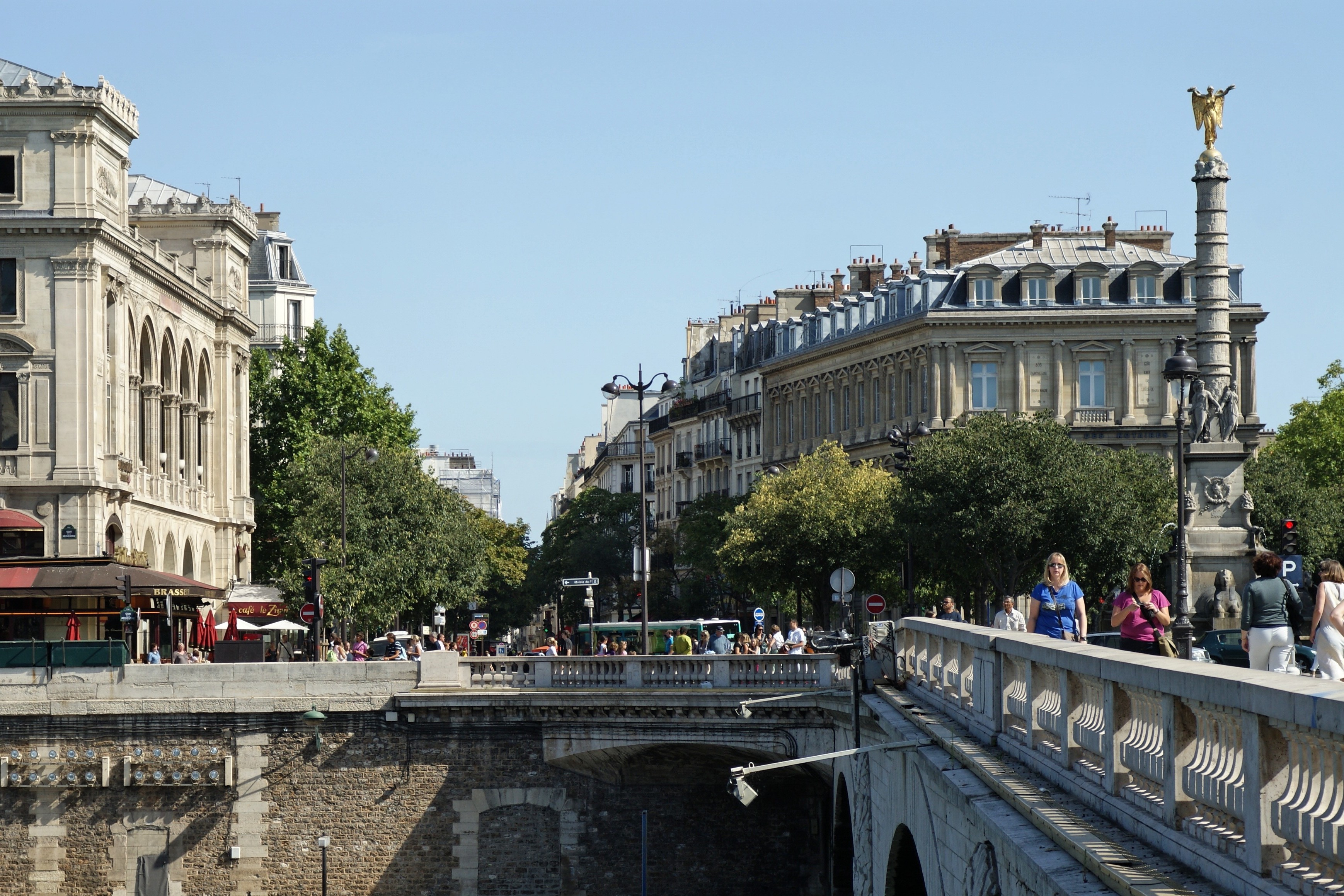 The Place du Châtelet is a public square in Paris, on the right bank of the river Seine, on the borderline between the 1st and 4th arrondissements. It lies at the north end of the Pont au Change, a bridge that connects the Île de la Cité, near the Palais de Justice and the Conciergerie, to the right bank.
The Place du Châtelet is a public square in Paris, on the right bank of the river Seine, on the borderline between the 1st and 4th arrondissements. It lies at the north end of the Pont au Change, a bridge that connects the Île de la Cité, near the Palais de Justice and the Conciergerie, to the right bank.
La Conciergerie
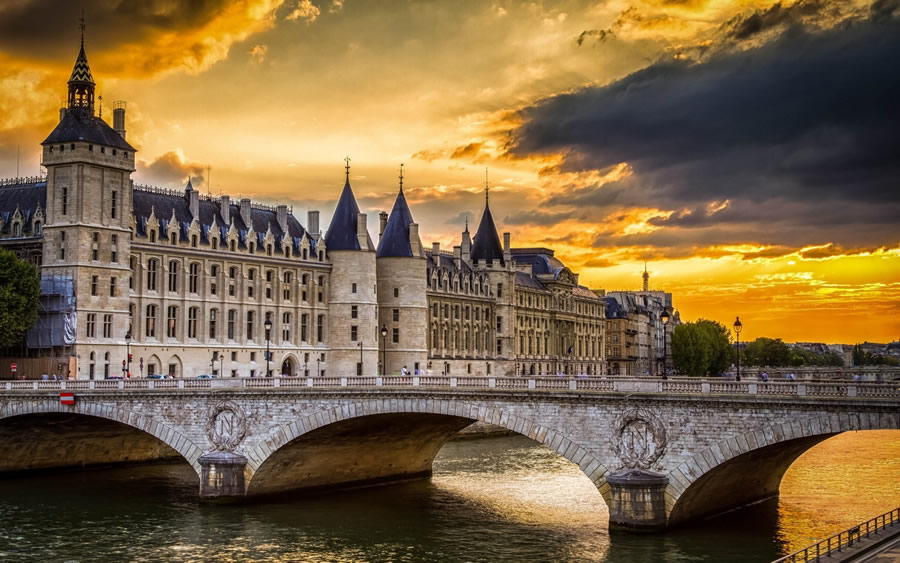 The Conciergerie is a building in Paris, France, located on the west of the Île de la Cité (literally “Island of the City”), formerly a prison but presently used mostly for law courts. It was part of the former royal palace, the Palais de la Cité, which consisted of the Conciergerie, Palais de Justice and the Sainte-Chapelle. Hundreds of prisoners during the French Revolution were taken from the Conciergerie to be executed by guillotine at a number of locations around Paris.
The Conciergerie is a building in Paris, France, located on the west of the Île de la Cité (literally “Island of the City”), formerly a prison but presently used mostly for law courts. It was part of the former royal palace, the Palais de la Cité, which consisted of the Conciergerie, Palais de Justice and the Sainte-Chapelle. Hundreds of prisoners during the French Revolution were taken from the Conciergerie to be executed by guillotine at a number of locations around Paris.
Parc de la Villette
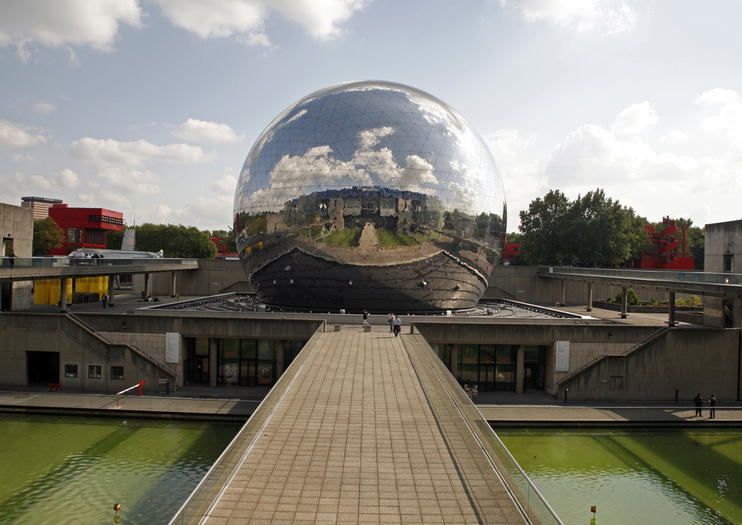 The Parc de la Villette is the third-largest park in Paris, 55.5 hectares in area, located at the northeastern edge of the city in the 19th arrondissement. The park houses one of the largest concentration of cultural venues in Paris, including the Cité des Sciences et de l’Industrie (City of Science and Industry, Europe’s largest science museum), three major concert venues, and the prestigious Conservatoire de Paris.
The Parc de la Villette is the third-largest park in Paris, 55.5 hectares in area, located at the northeastern edge of the city in the 19th arrondissement. The park houses one of the largest concentration of cultural venues in Paris, including the Cité des Sciences et de l’Industrie (City of Science and Industry, Europe’s largest science museum), three major concert venues, and the prestigious Conservatoire de Paris.
Grand Arche
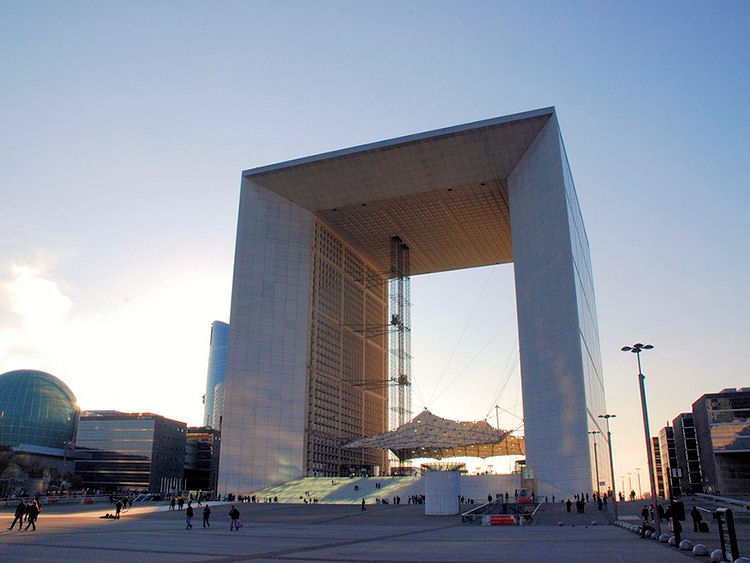 La Grande Arche de la Défense (The Great Arc of the Defense) is a monument and building in the business district of La Défense and in the commune of Puteaux, to the west of Paris, France. It is usually known as the Arche de la Défense or simply as La Grande Arche. A 110 meter high cube, La Grande Arche is part of the perspective from the Louvre to Arc de Triomphe. The distance from La Grande Arche to Arc de Triomphe is 4 km.
La Grande Arche de la Défense (The Great Arc of the Defense) is a monument and building in the business district of La Défense and in the commune of Puteaux, to the west of Paris, France. It is usually known as the Arche de la Défense or simply as La Grande Arche. A 110 meter high cube, La Grande Arche is part of the perspective from the Louvre to Arc de Triomphe. The distance from La Grande Arche to Arc de Triomphe is 4 km.
Père Lachaise Cemetery
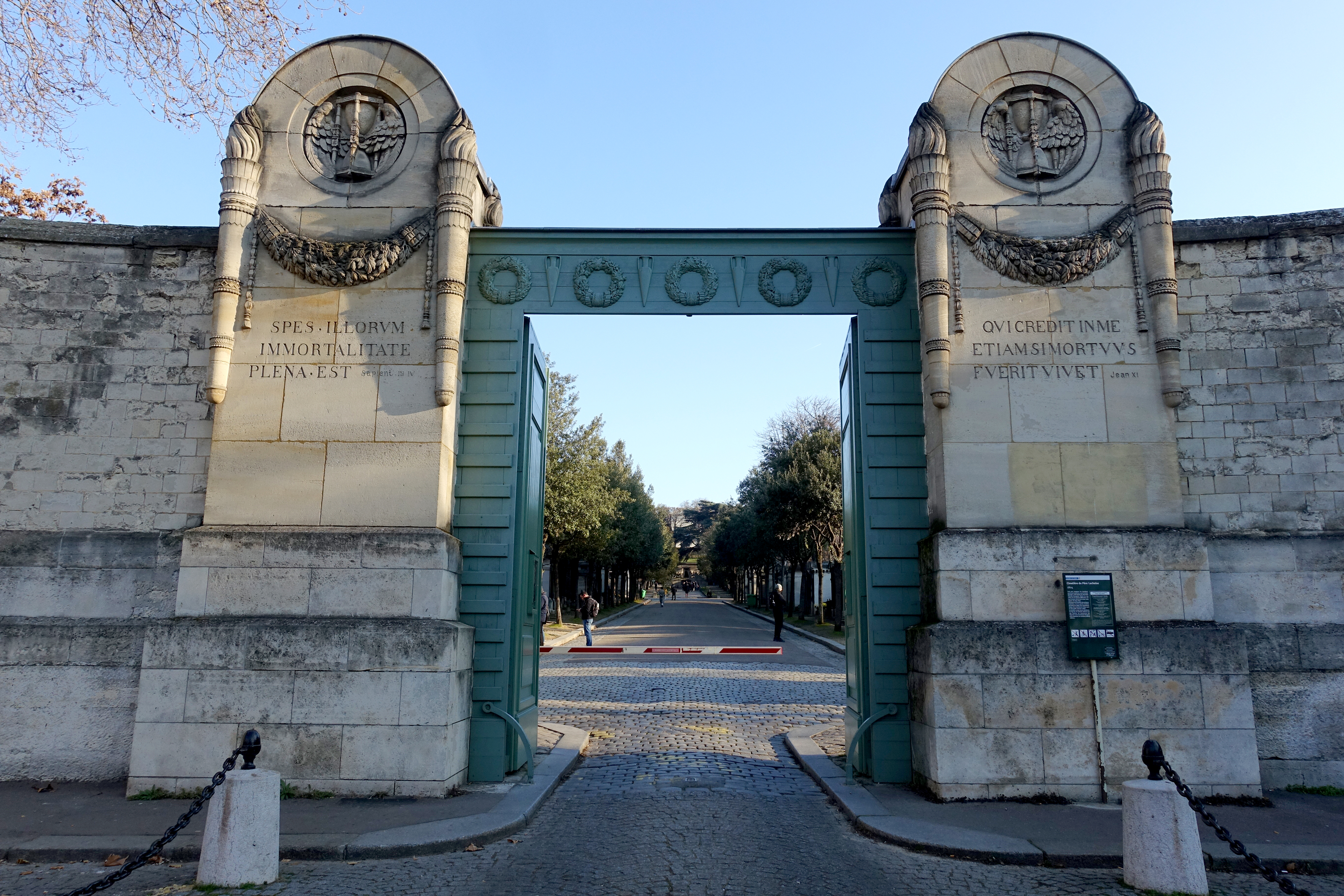 Père Lachaise Cemetery is the largest cemetery in Paris, France (44 hectares or 110 acres). With more than 3.5 million visitors annually, it is the most visited necropolis in the world. Père Lachaise is located in the 20th arrondissement and notable for being the first garden cemetery, as well as the first municipal cemetery in Paris. It is also the site of three World War I memorials. The cemetery is on Boulevard de Ménilmontant. The Paris Métro station Philippe Auguste on Line 2 is next to the main entrance, while the station named Père Lachaise, on both Line 2 and Line 3, is 500 metres away near a side entrance. Many tourists prefer the Gambetta station on Line 3, as it allows them to enter near the tomb of Oscar Wilde and then walk downhill to visit the rest of the cemetery.
Père Lachaise Cemetery is the largest cemetery in Paris, France (44 hectares or 110 acres). With more than 3.5 million visitors annually, it is the most visited necropolis in the world. Père Lachaise is located in the 20th arrondissement and notable for being the first garden cemetery, as well as the first municipal cemetery in Paris. It is also the site of three World War I memorials. The cemetery is on Boulevard de Ménilmontant. The Paris Métro station Philippe Auguste on Line 2 is next to the main entrance, while the station named Père Lachaise, on both Line 2 and Line 3, is 500 metres away near a side entrance. Many tourists prefer the Gambetta station on Line 3, as it allows them to enter near the tomb of Oscar Wilde and then walk downhill to visit the rest of the cemetery.
Parc des Buttes-Chaumont
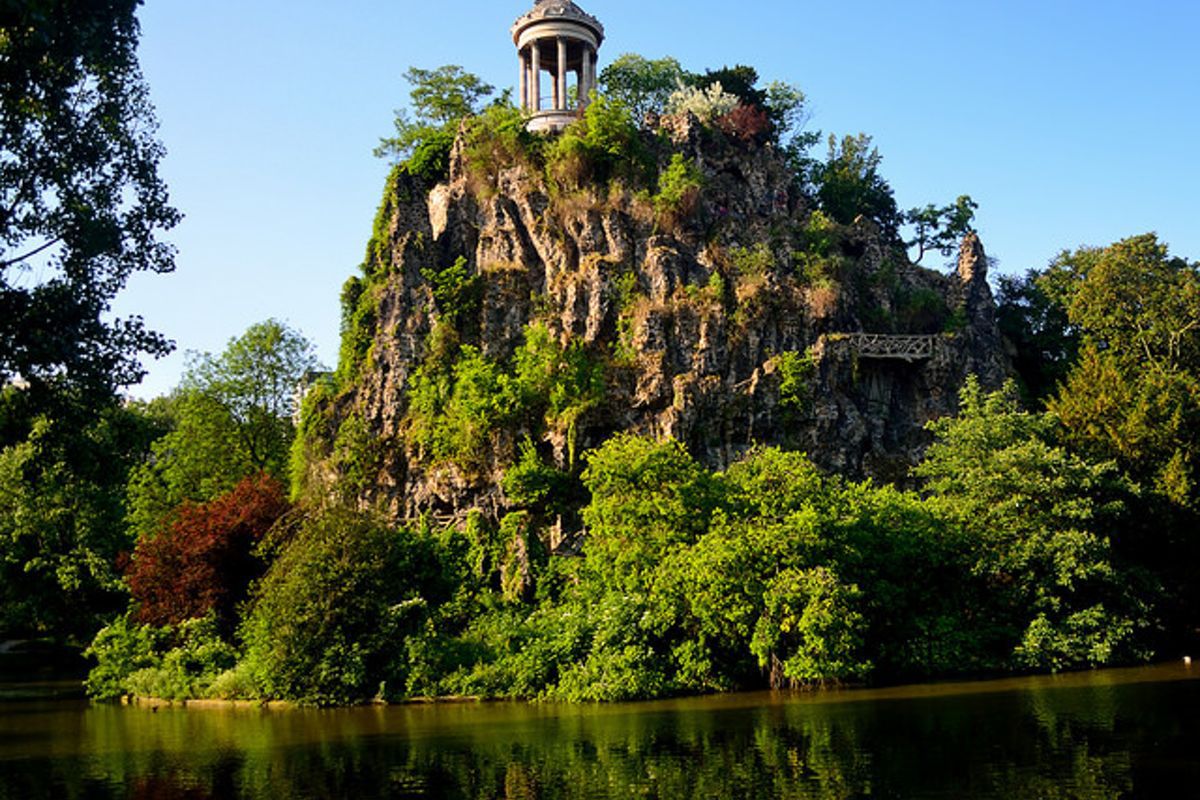 The Parc des Buttes-Chaumont is a public park situated in northeastern Paris, in the 19th arrondissement. Occupying 24.7 hectares (61 acres), it is the fifth-largest park in Paris, after the Bois de Vincennes, the Bois de Boulogne, the Parc de la Villette and the Tuileries Garden. It was opened in 1867, late in the regime of Emperor Napoleon III, and was built by Jean-Charles Alphand, who created all the major parks of Napoleon III. The park has 5.5 kilometres (3.4 miles) of roads and 2.2 kilometres (1.4 miles) of paths. The most famous feature of the park is the Temple de la Sibylle, inspired by the Temple of Vesta in Tivoli, Italy, perched at the top of a cliff fifty metres above the waters of the artificial lake.
The Parc des Buttes-Chaumont is a public park situated in northeastern Paris, in the 19th arrondissement. Occupying 24.7 hectares (61 acres), it is the fifth-largest park in Paris, after the Bois de Vincennes, the Bois de Boulogne, the Parc de la Villette and the Tuileries Garden. It was opened in 1867, late in the regime of Emperor Napoleon III, and was built by Jean-Charles Alphand, who created all the major parks of Napoleon III. The park has 5.5 kilometres (3.4 miles) of roads and 2.2 kilometres (1.4 miles) of paths. The most famous feature of the park is the Temple de la Sibylle, inspired by the Temple of Vesta in Tivoli, Italy, perched at the top of a cliff fifty metres above the waters of the artificial lake.

